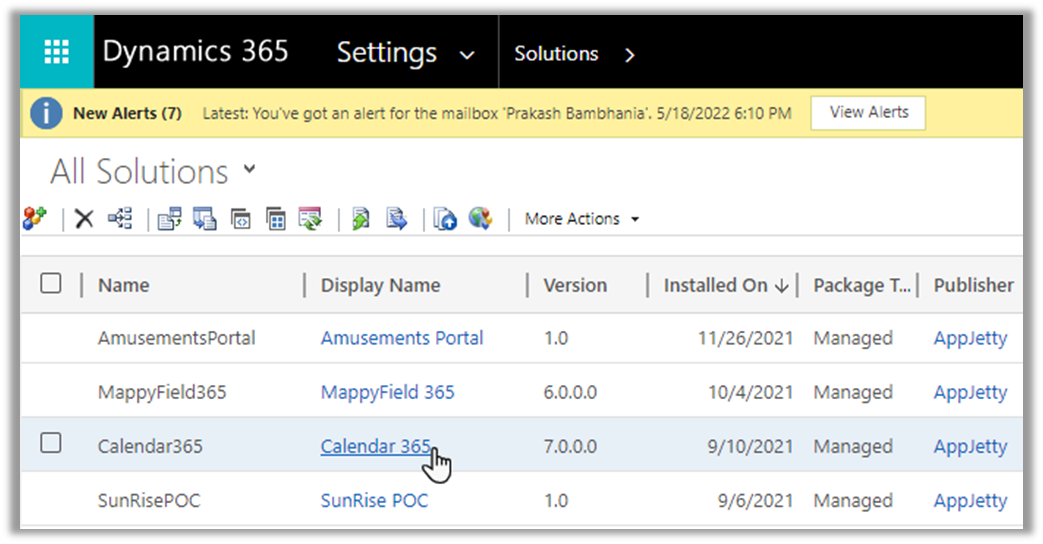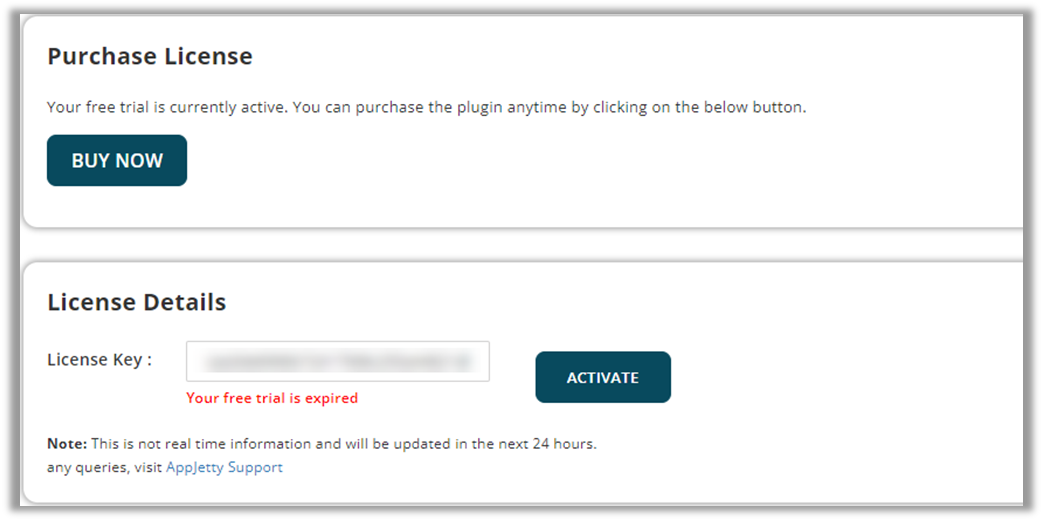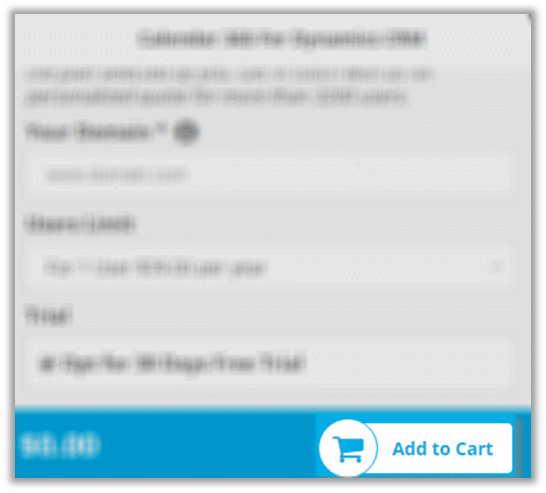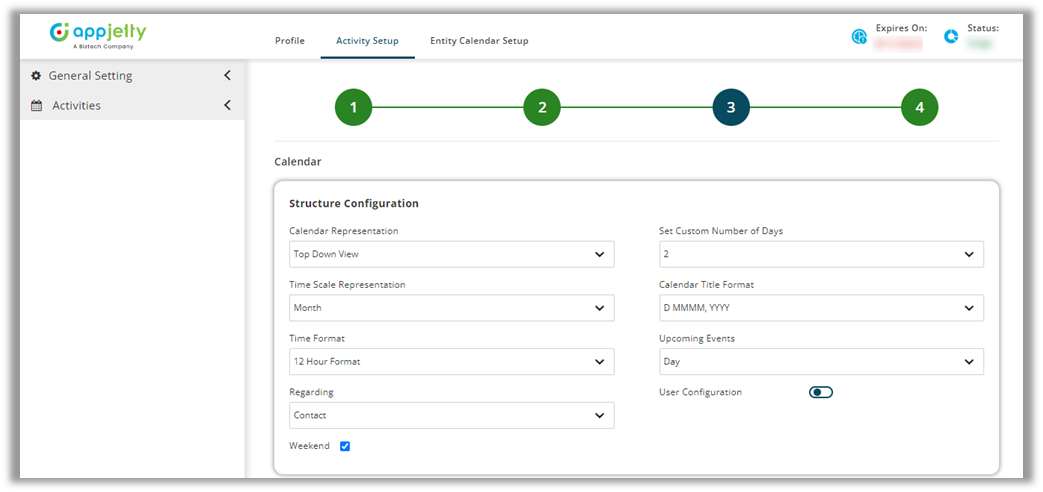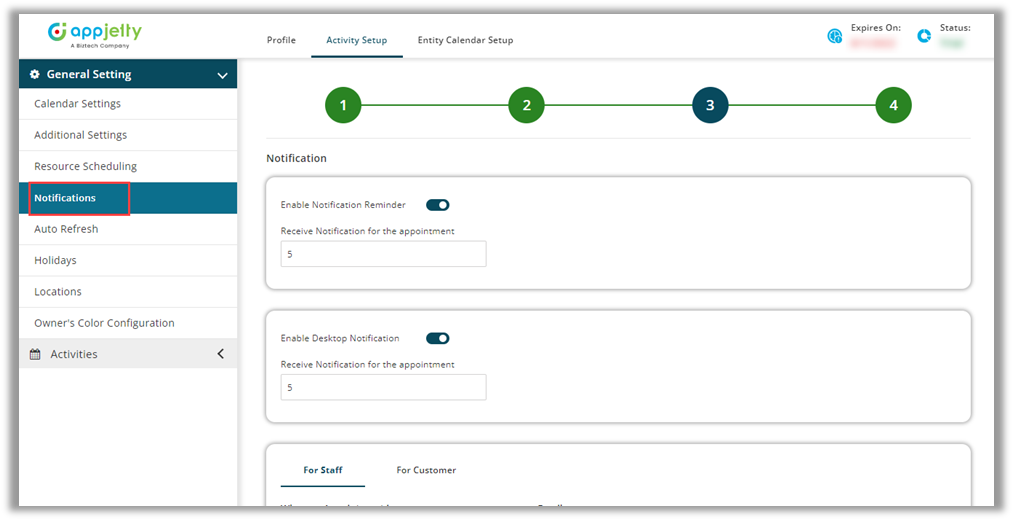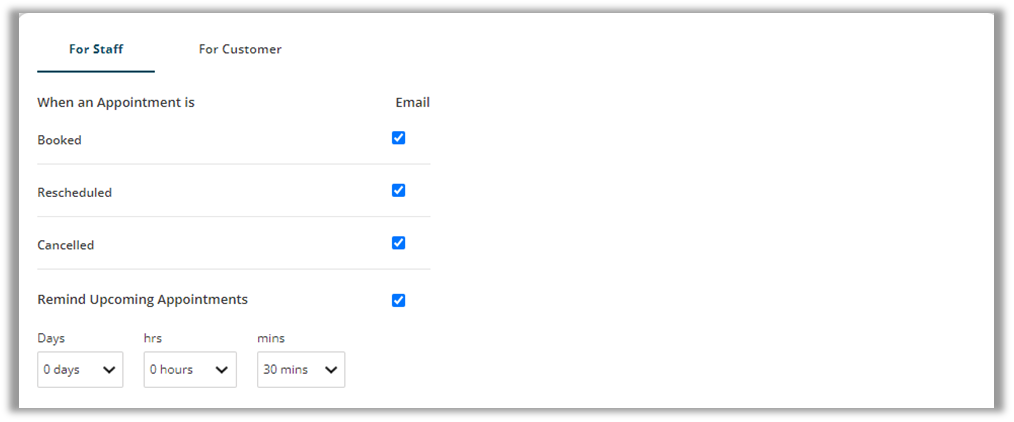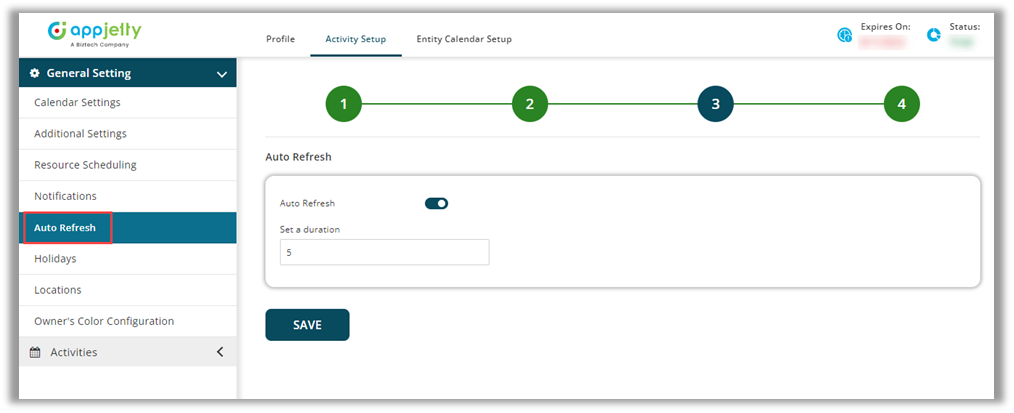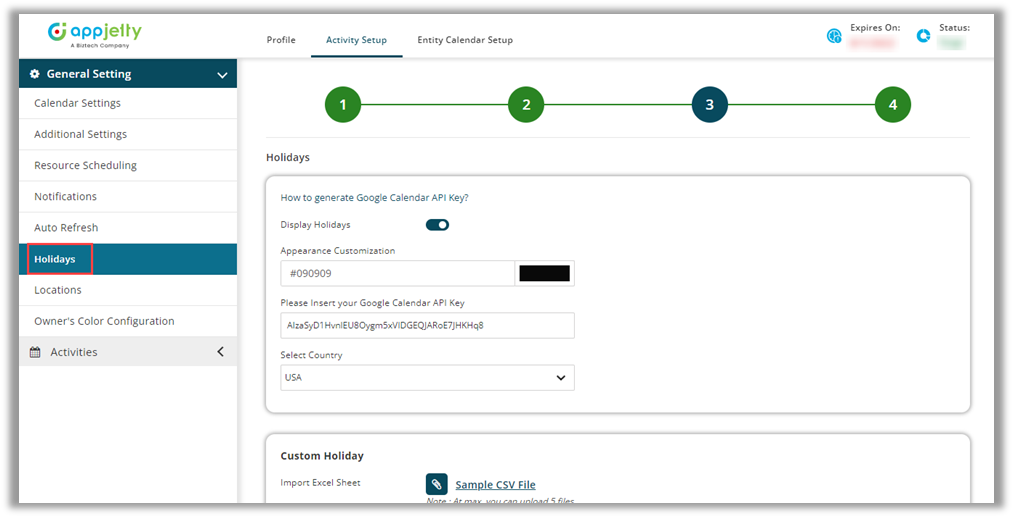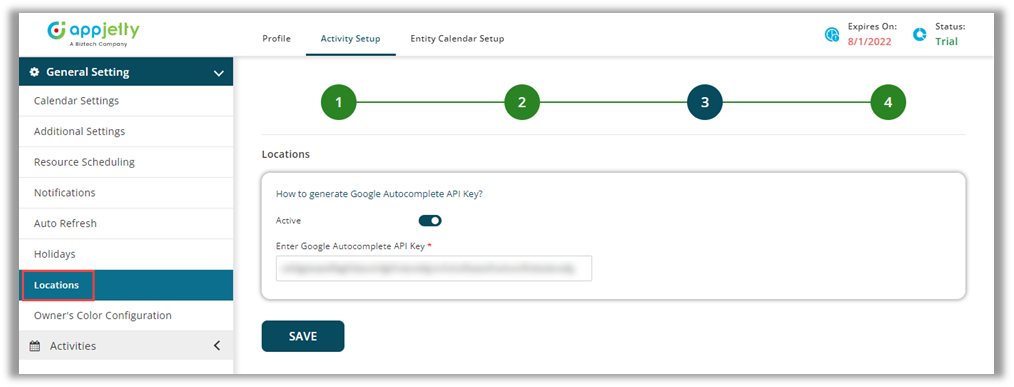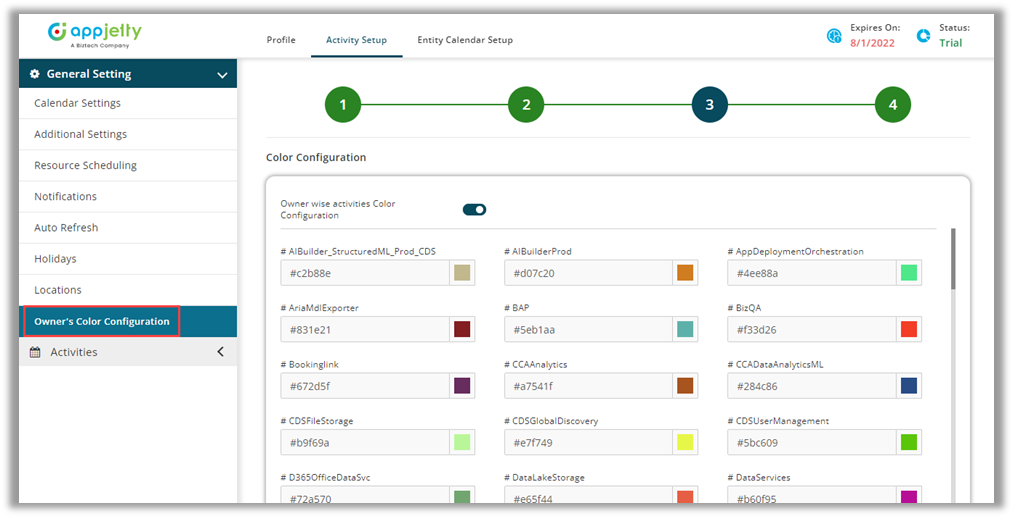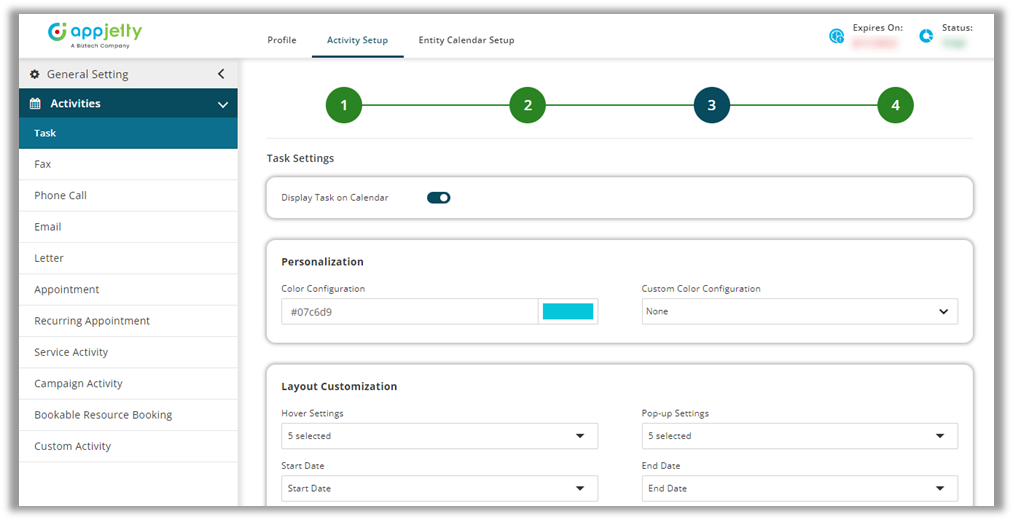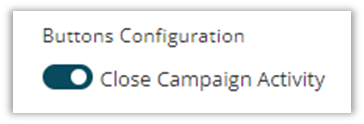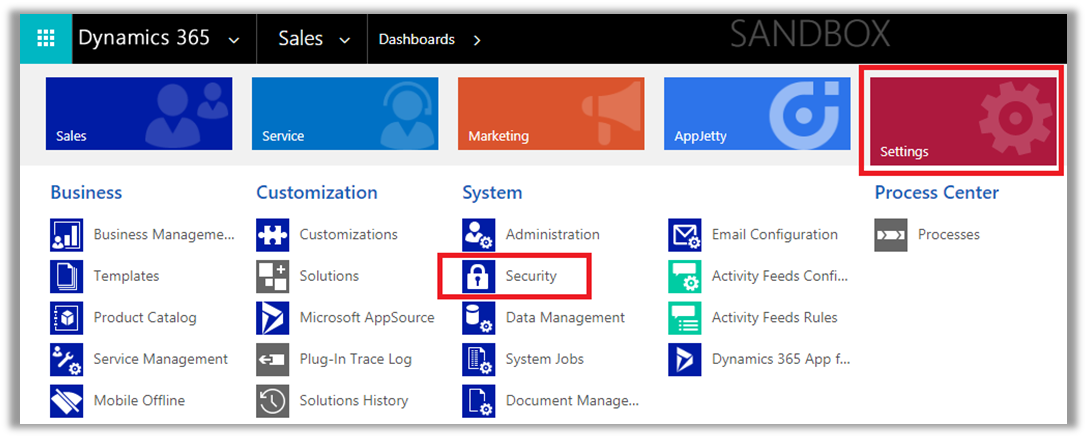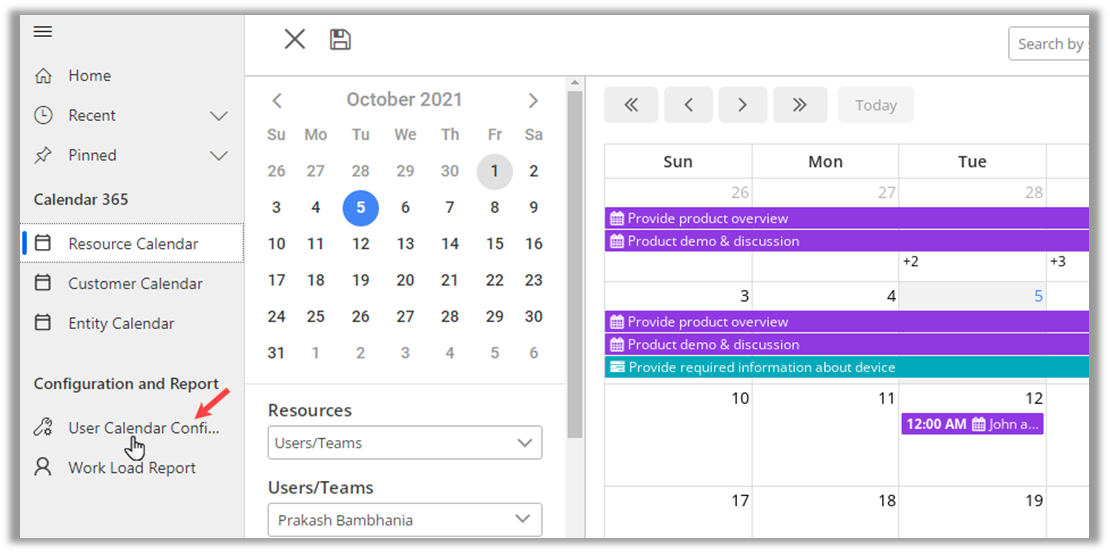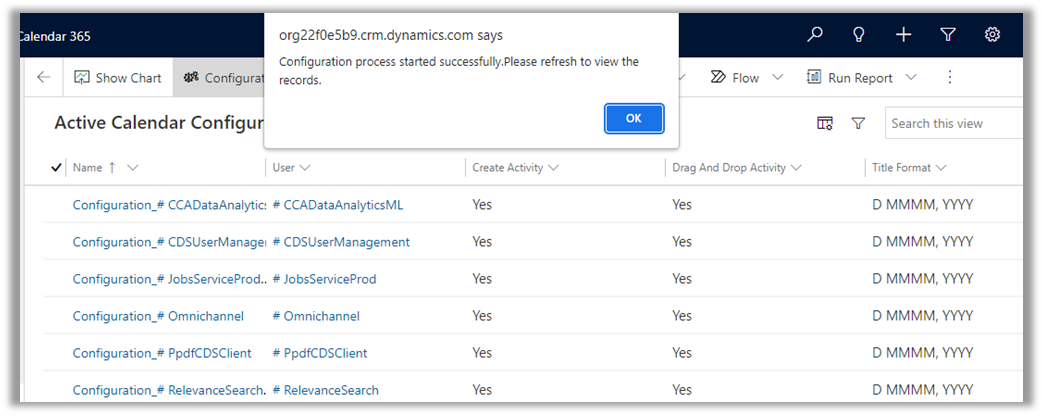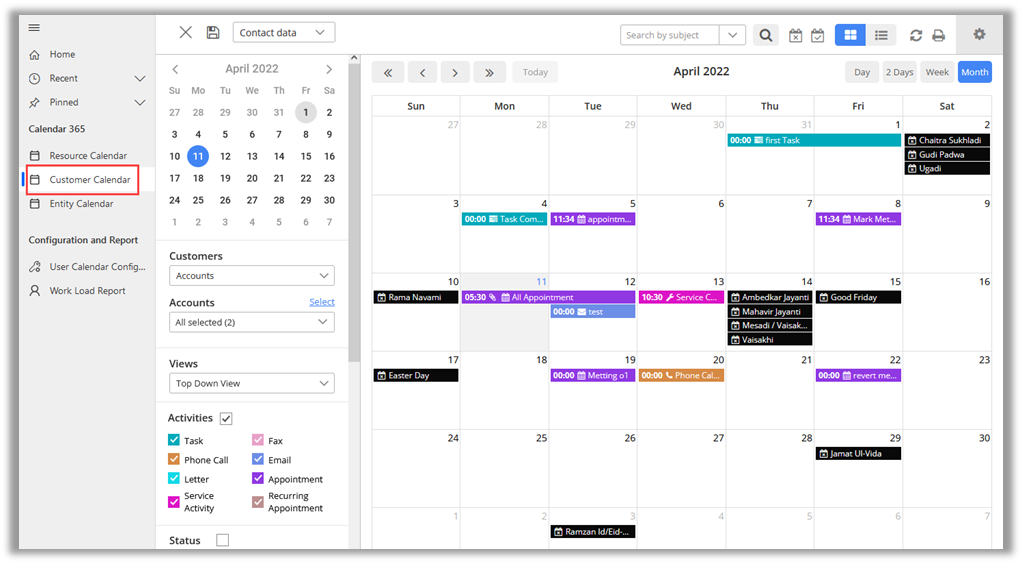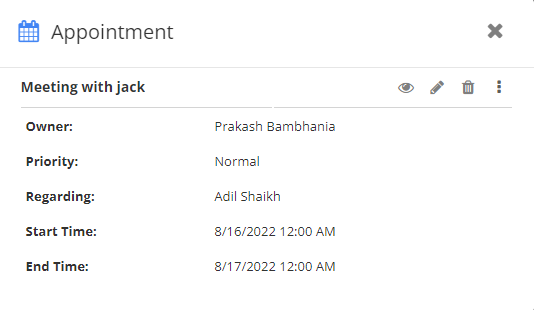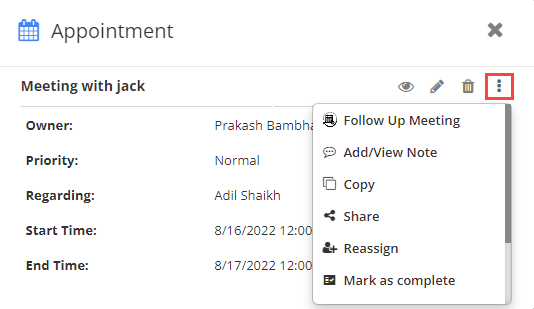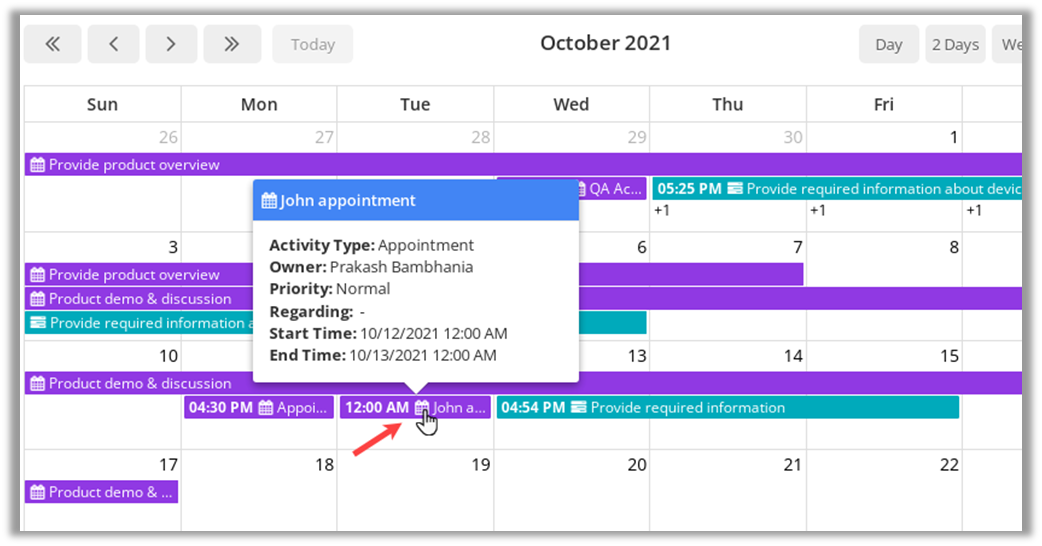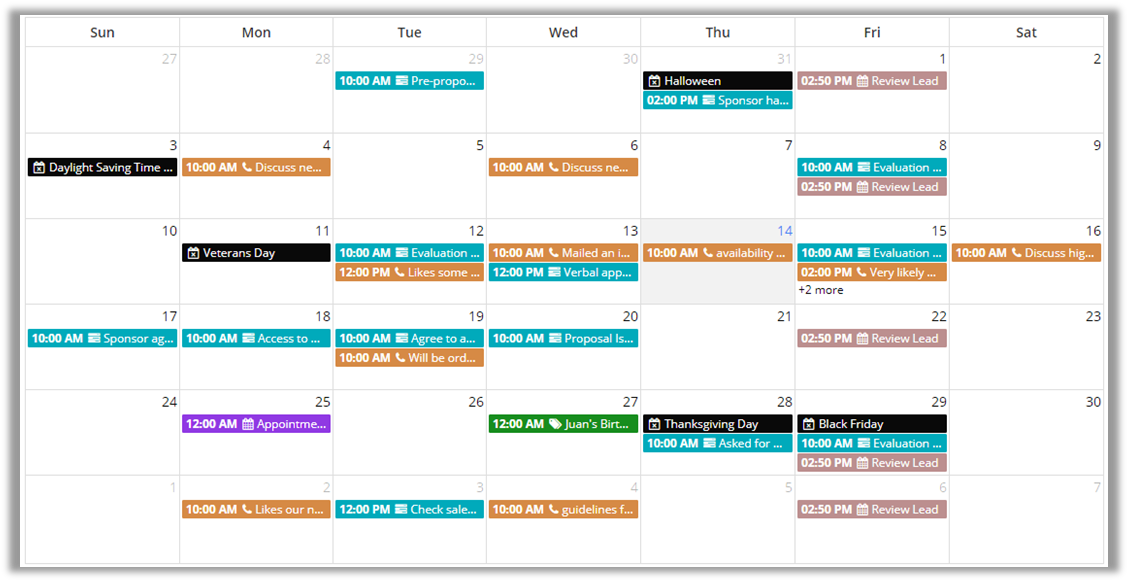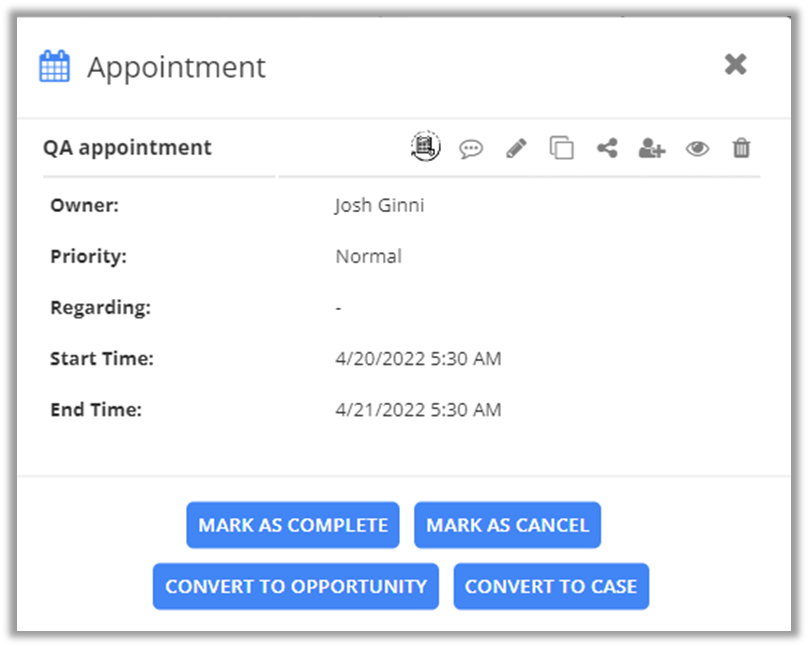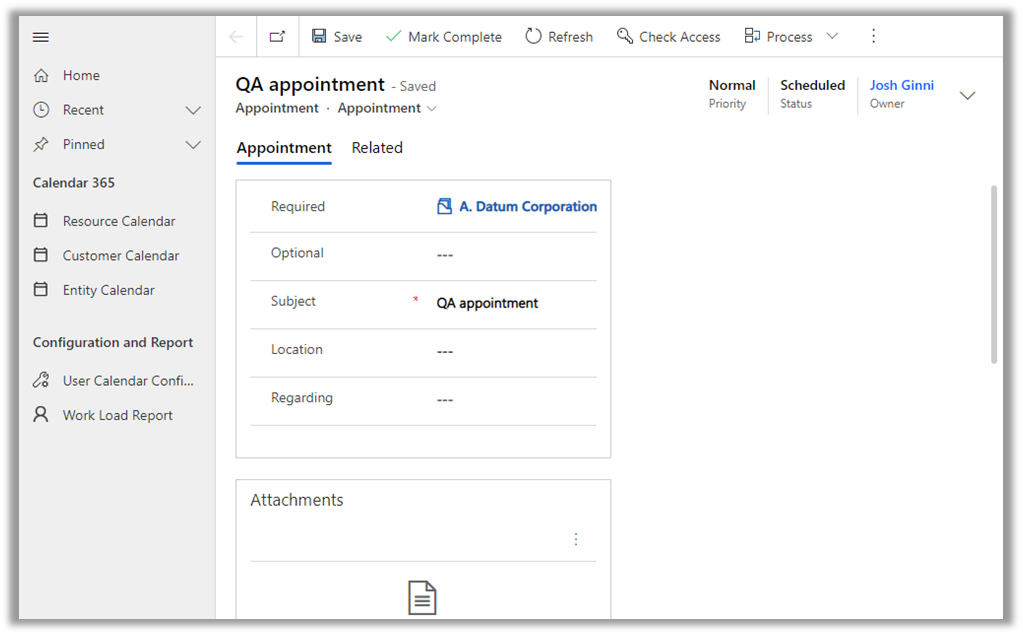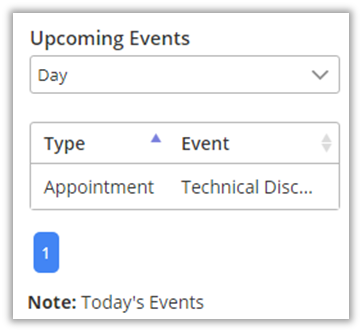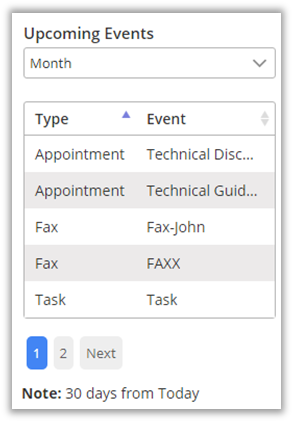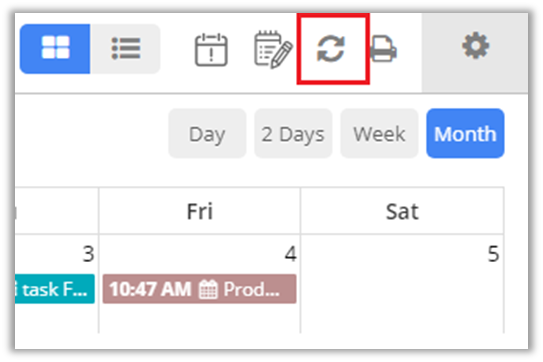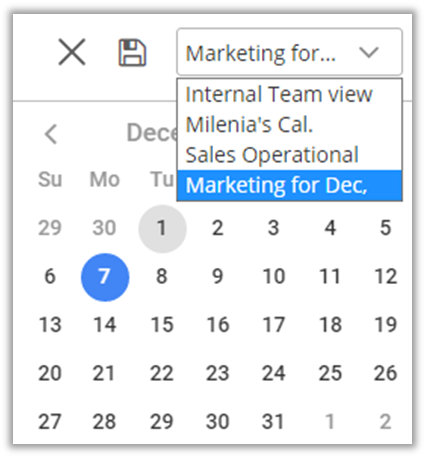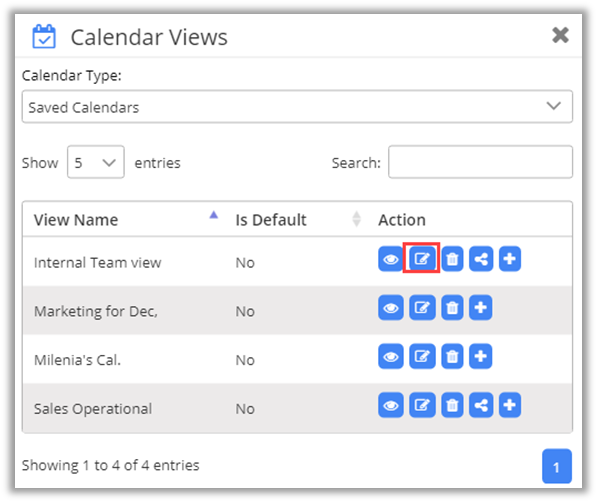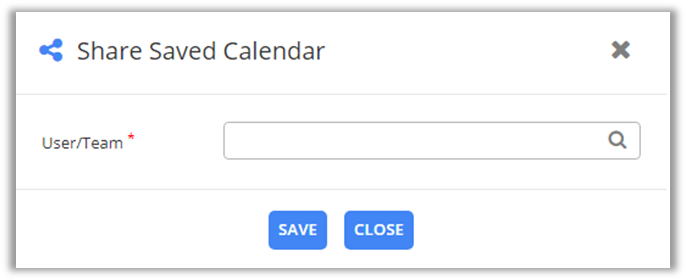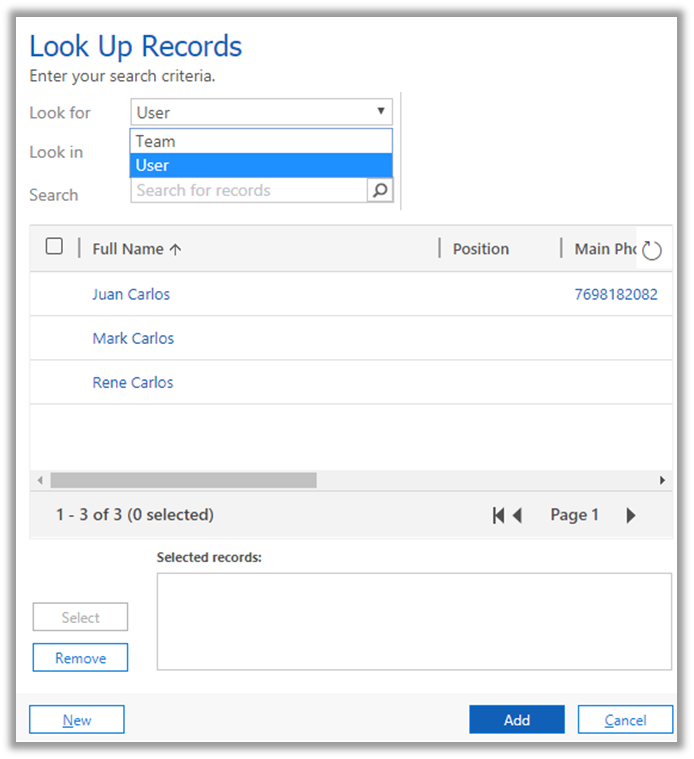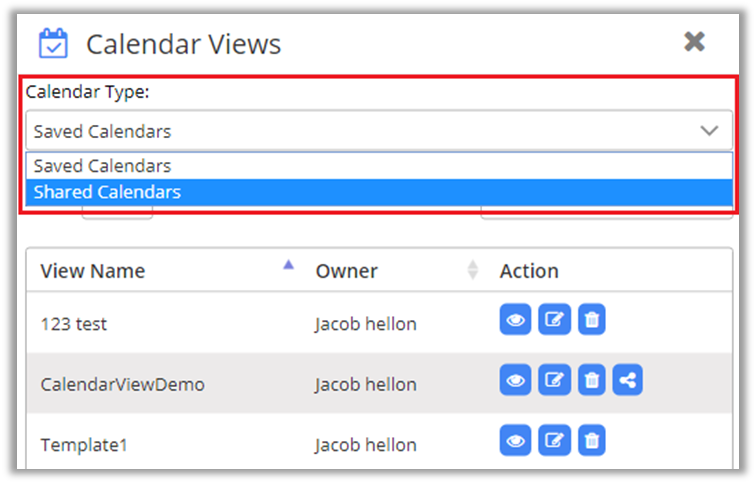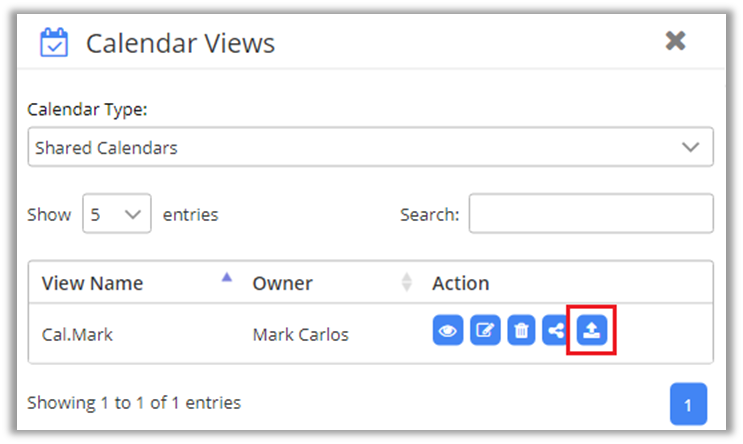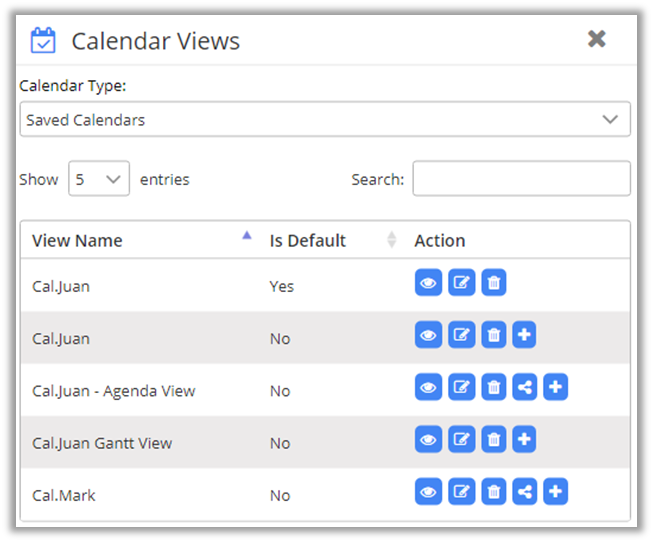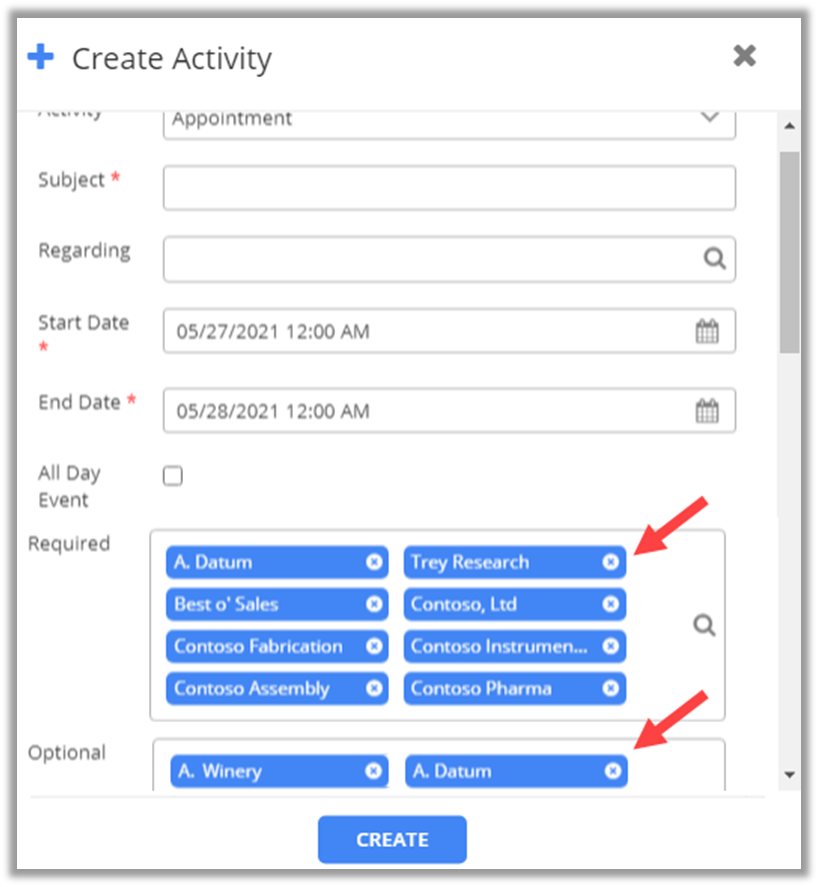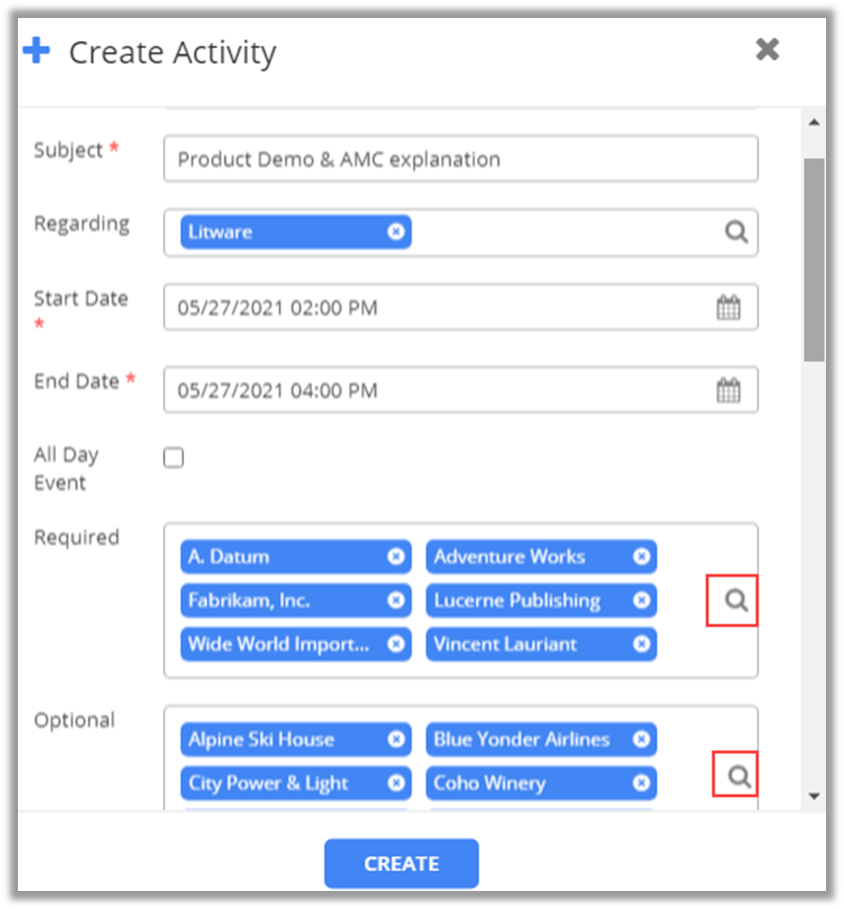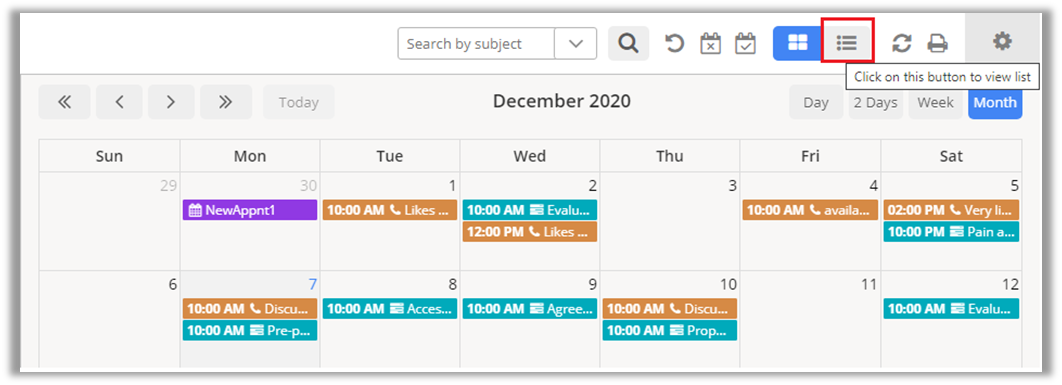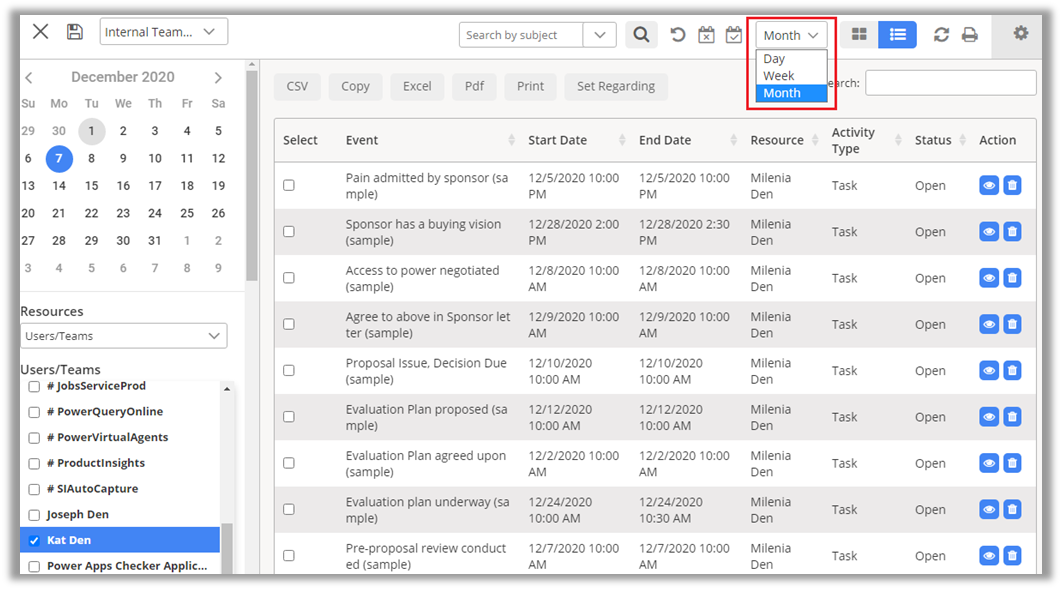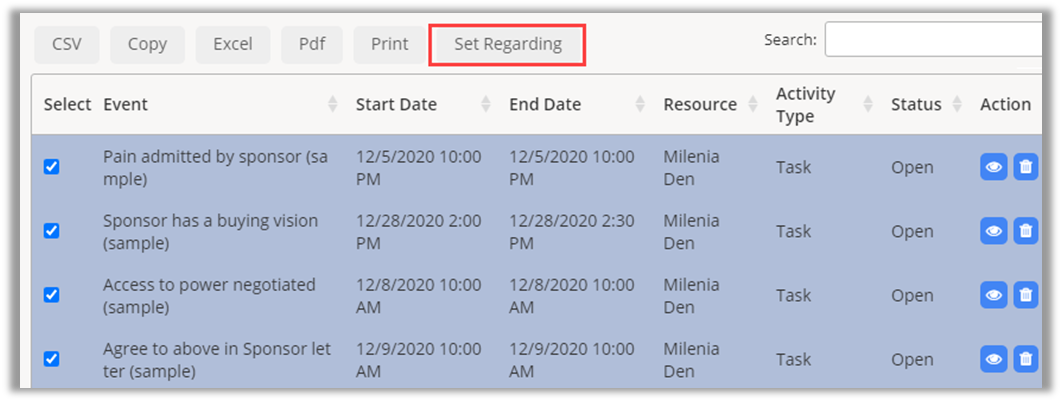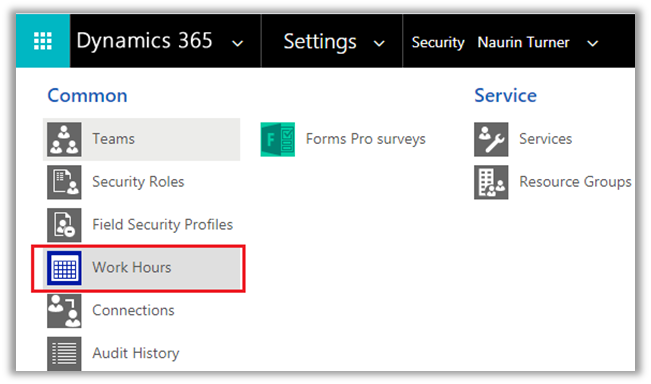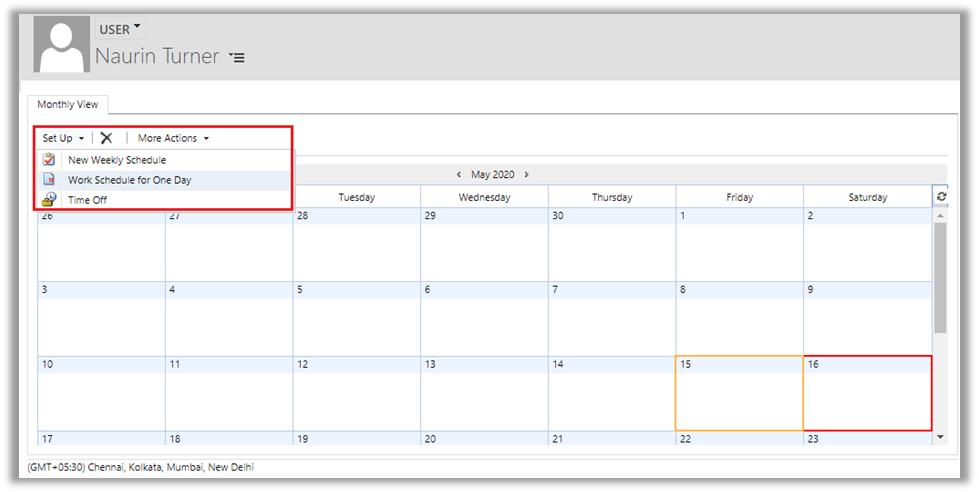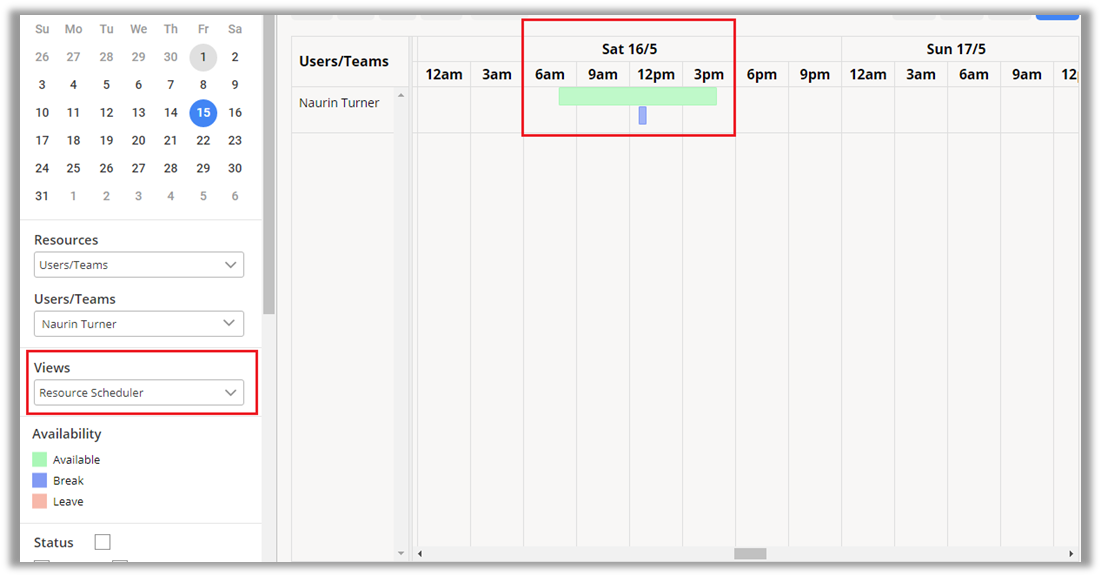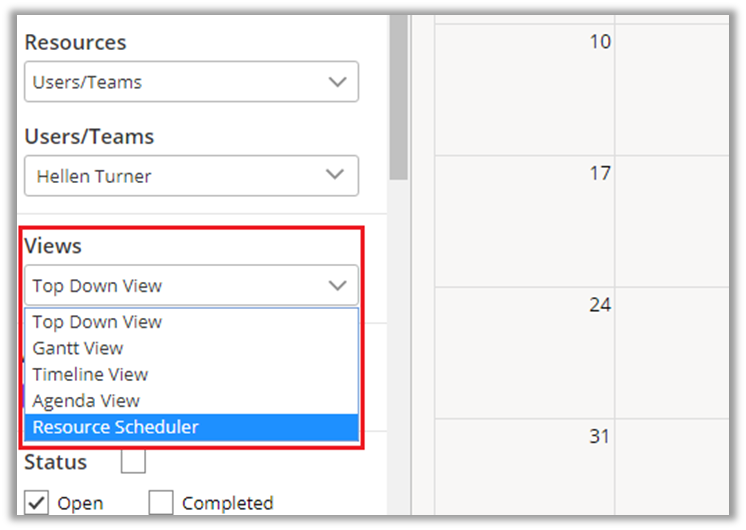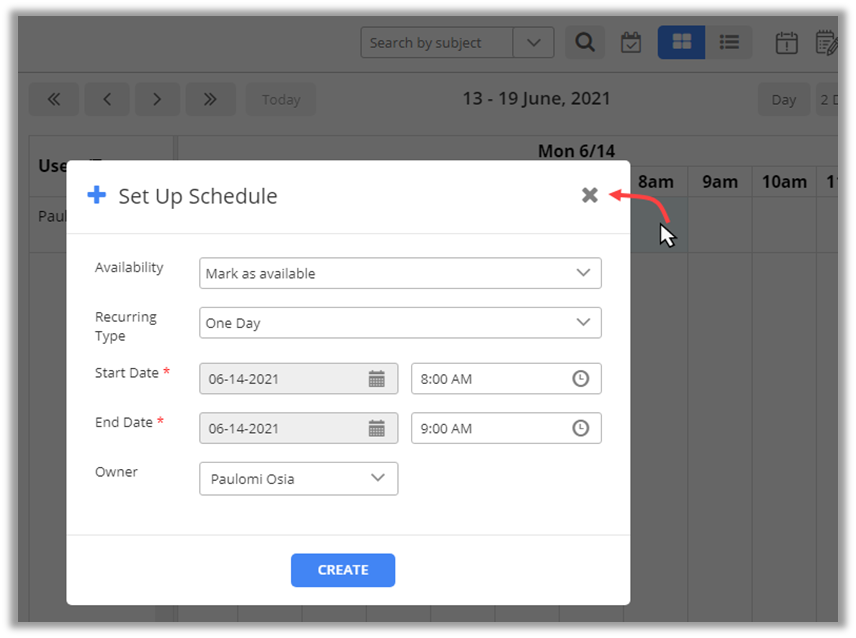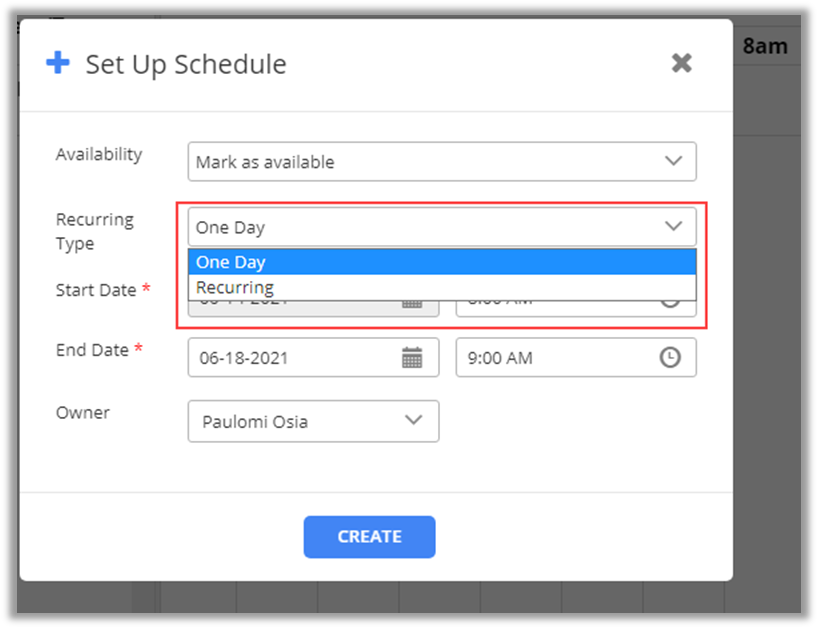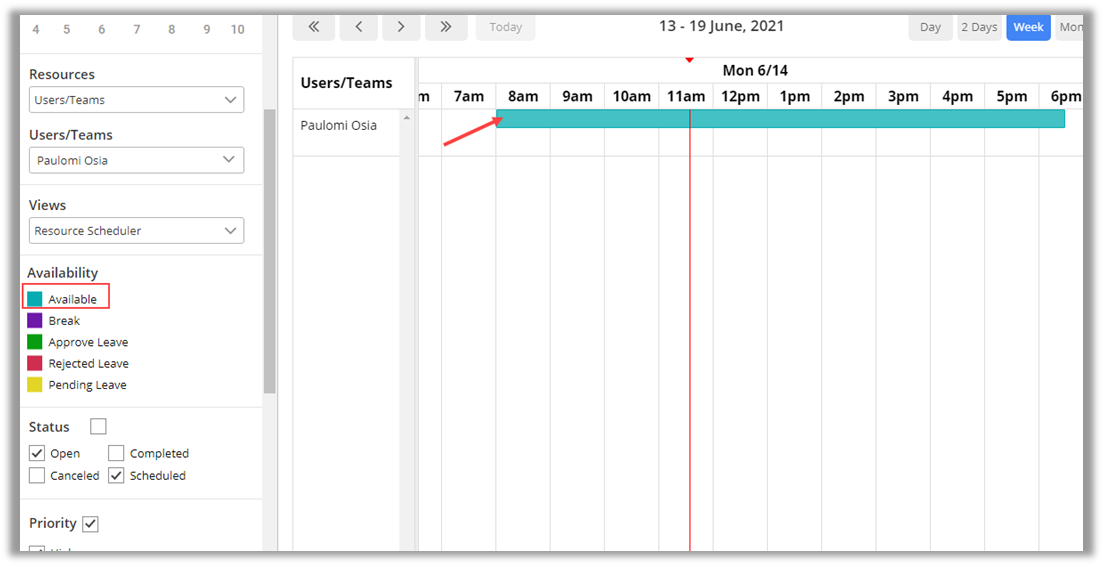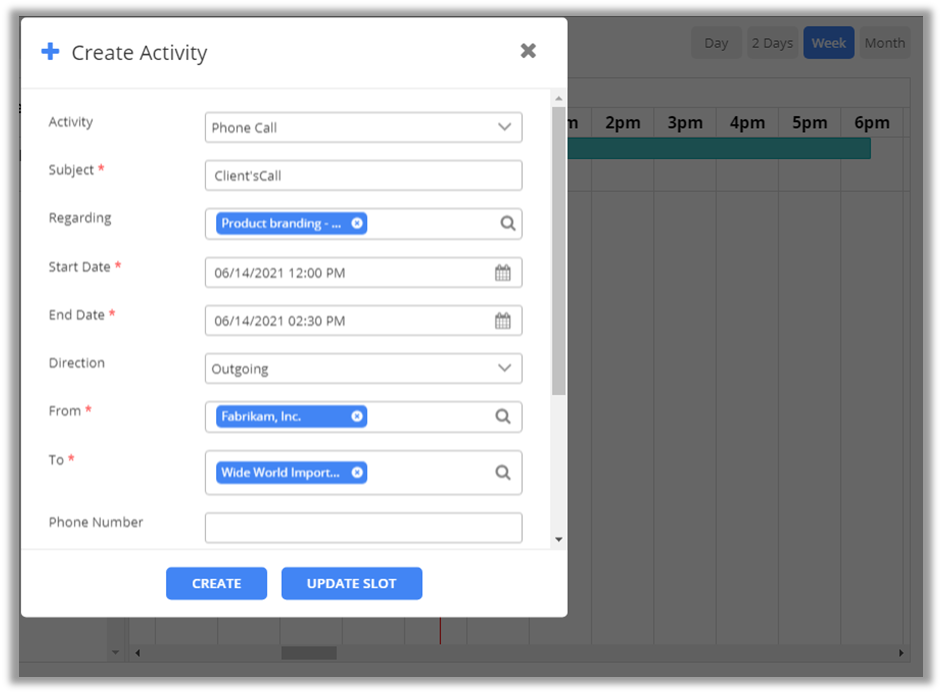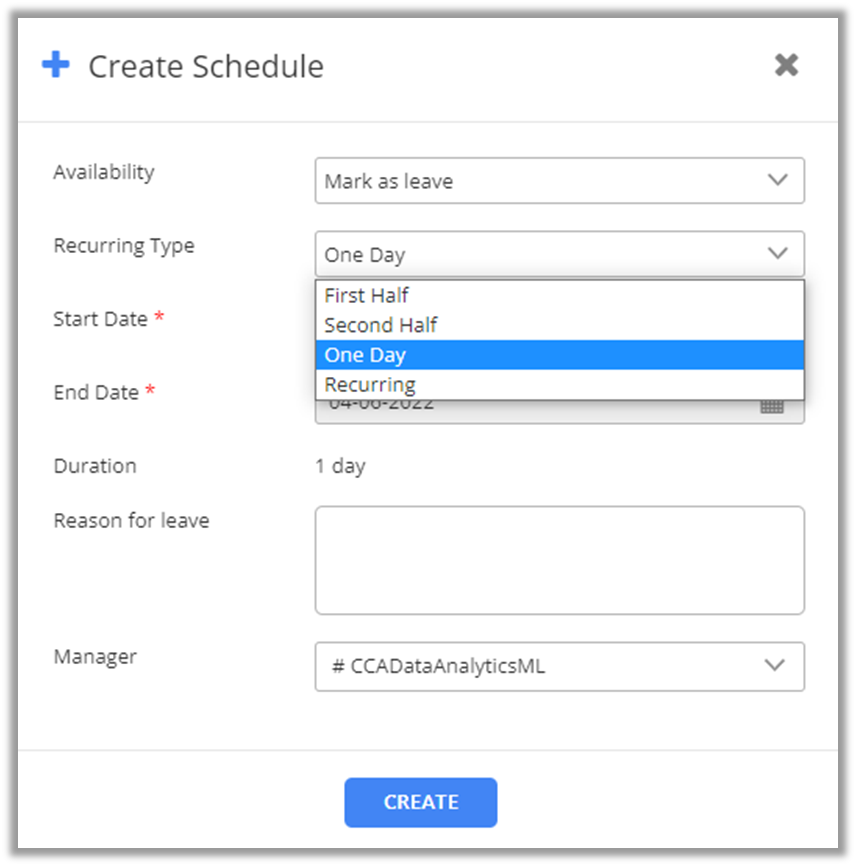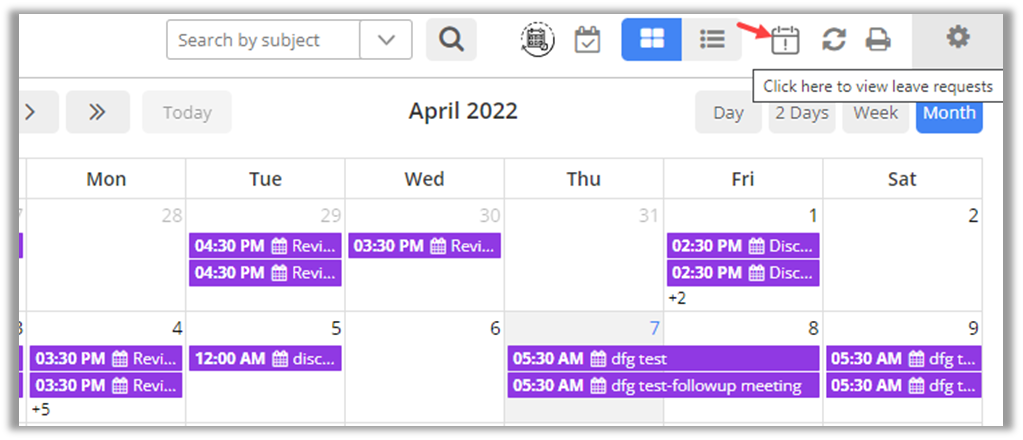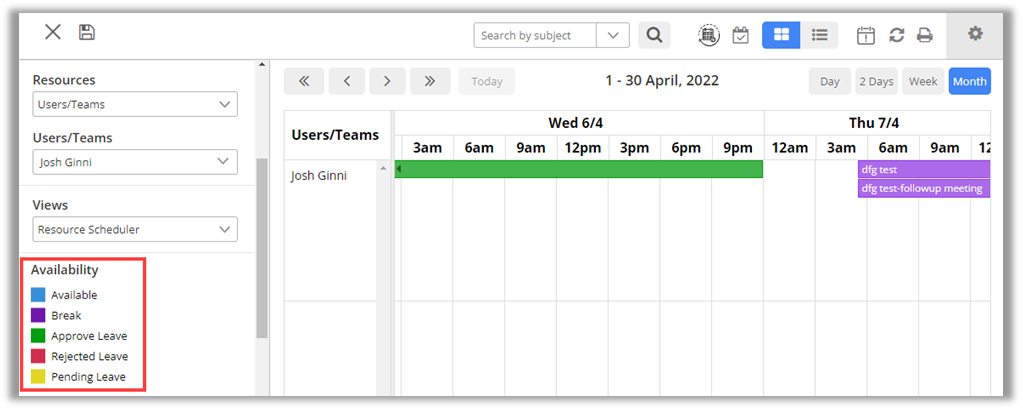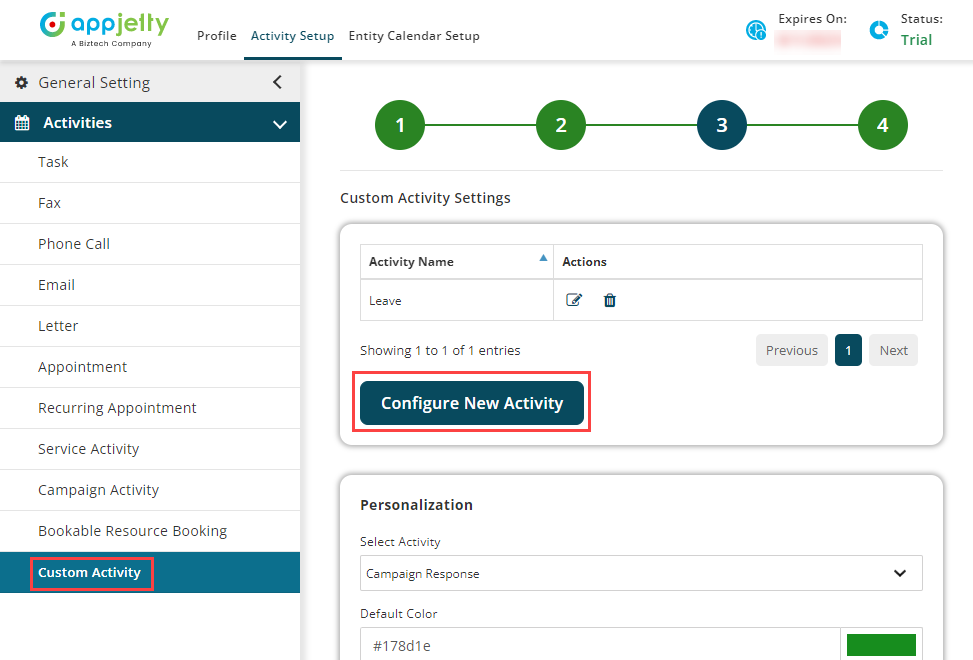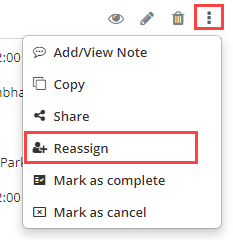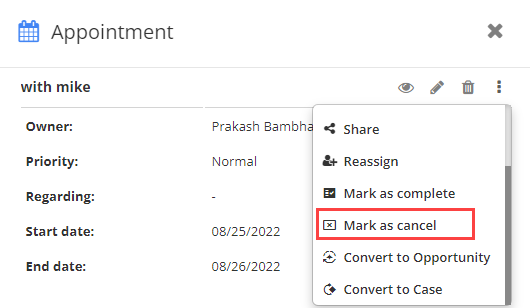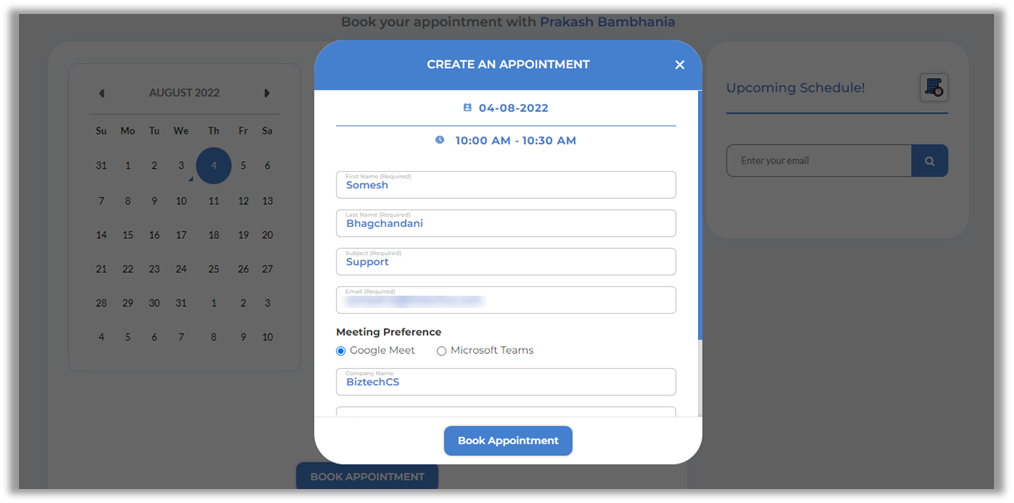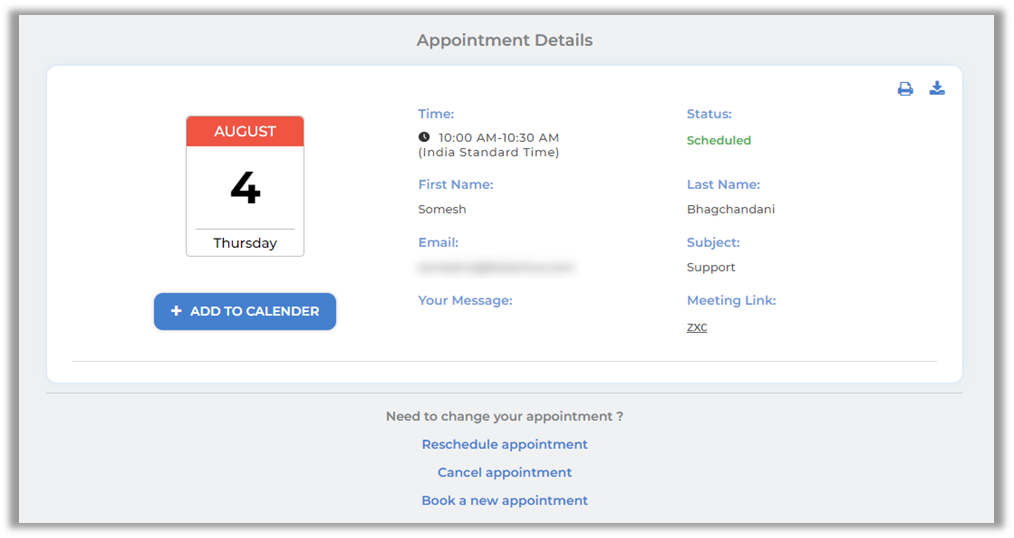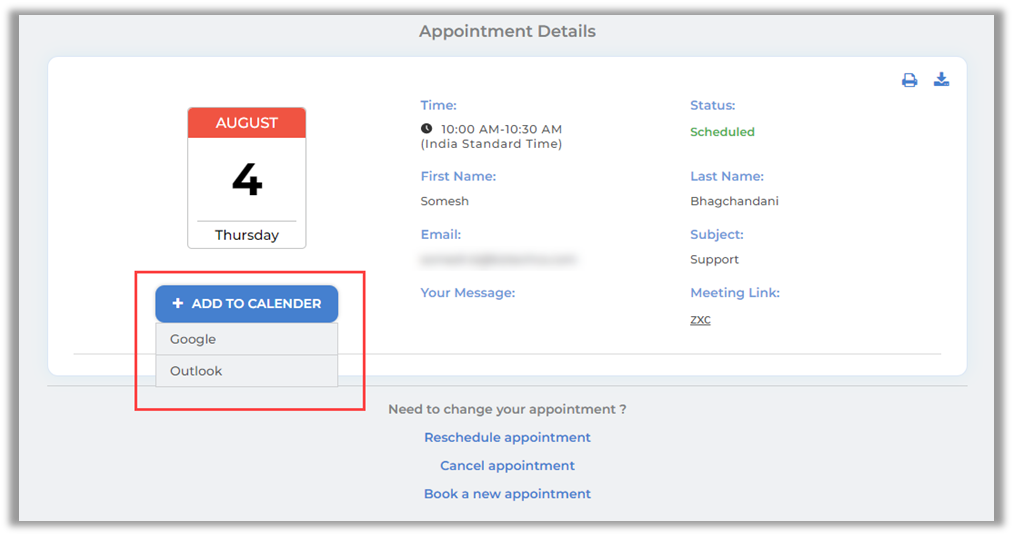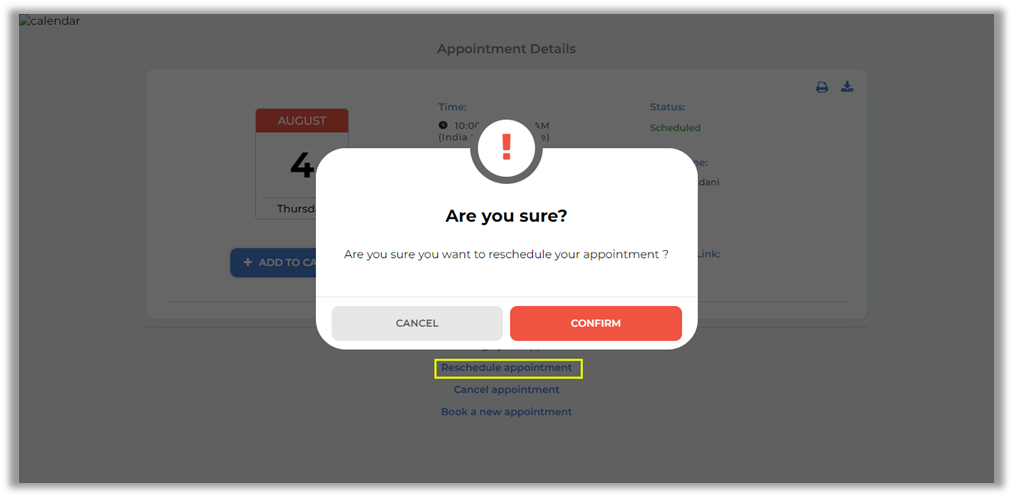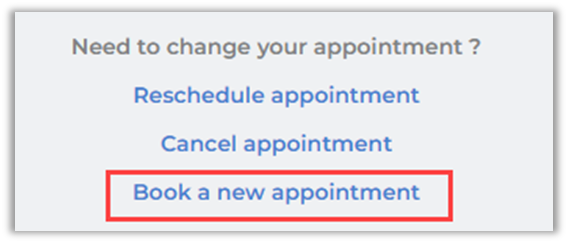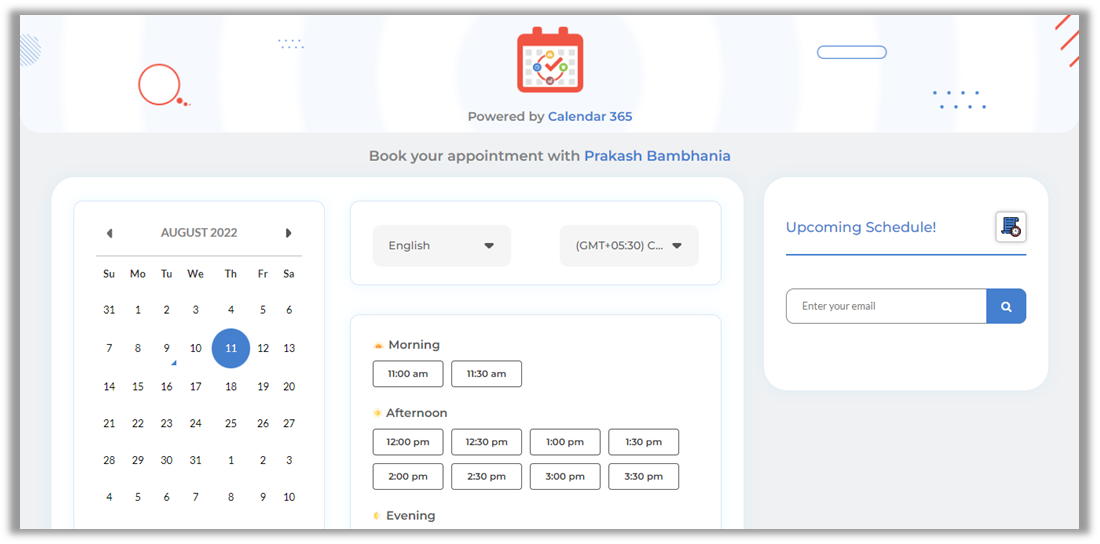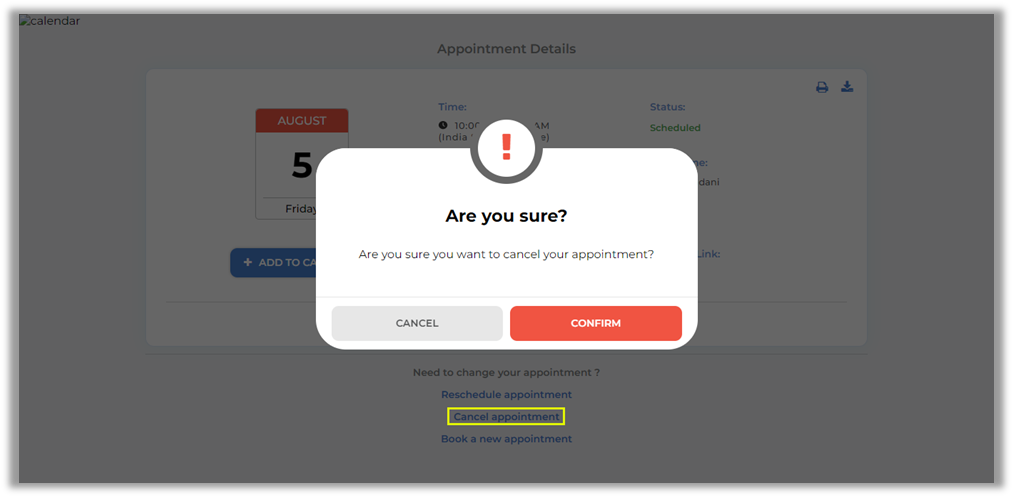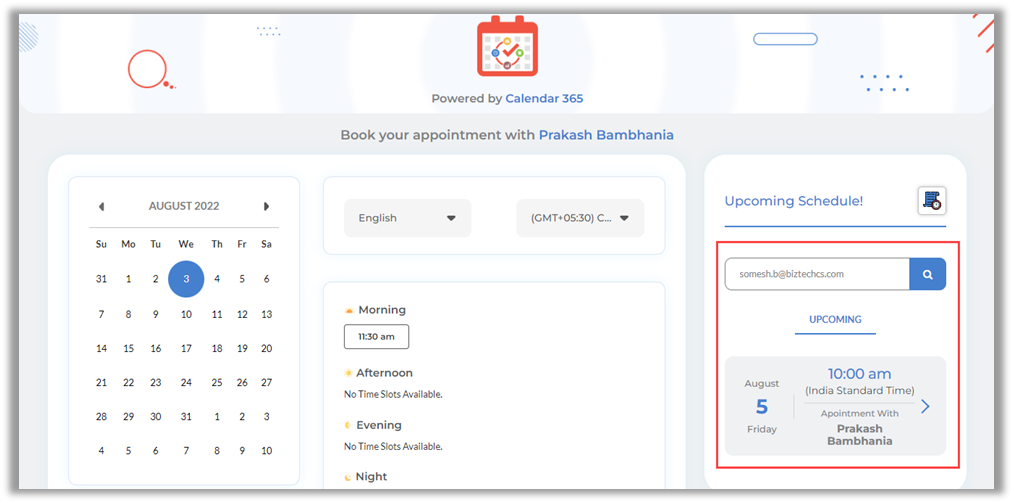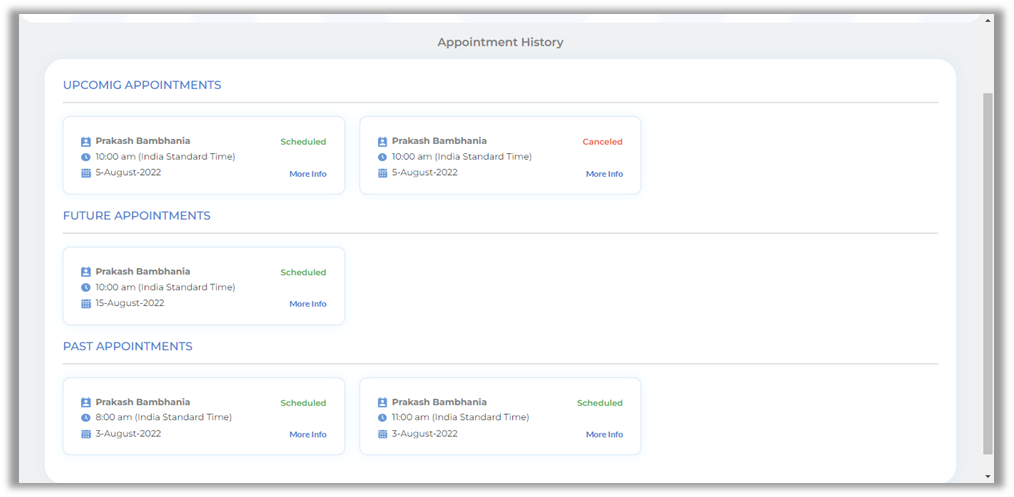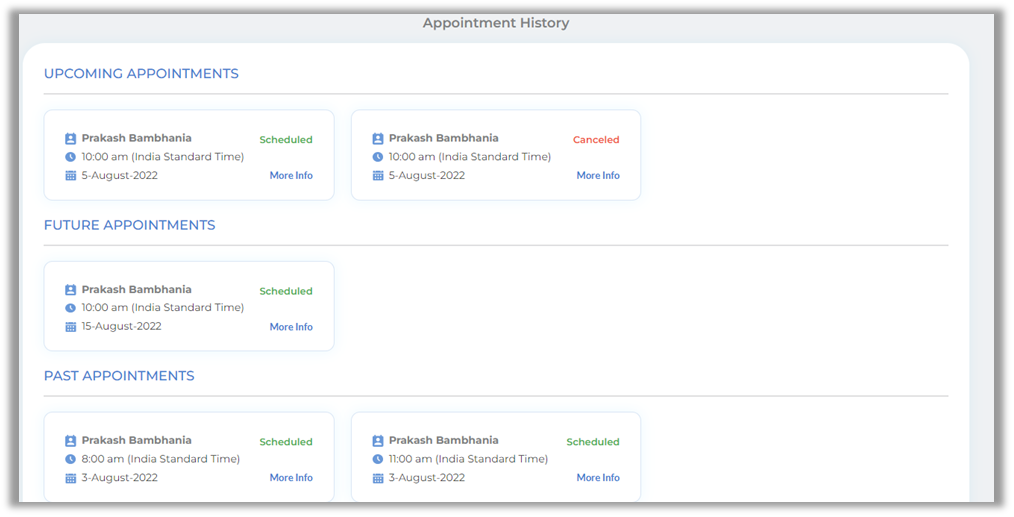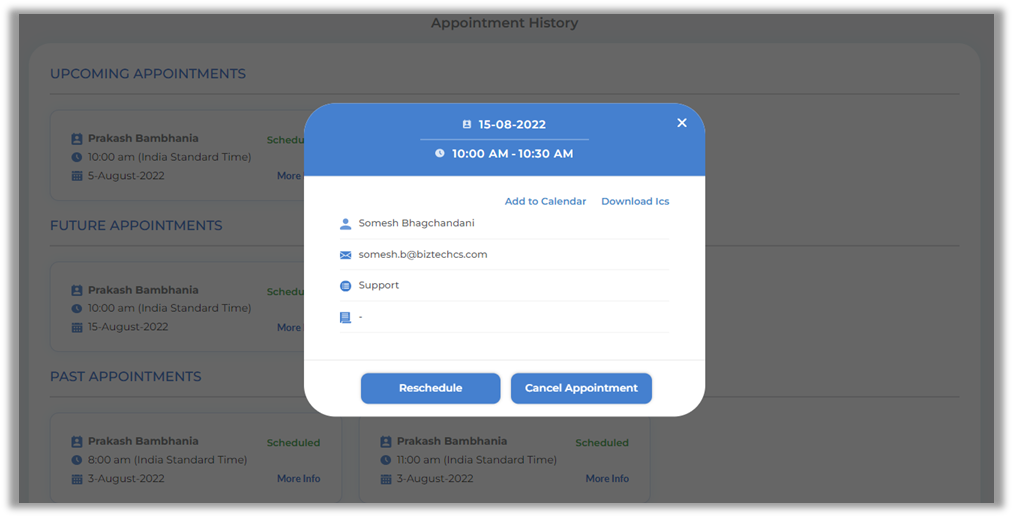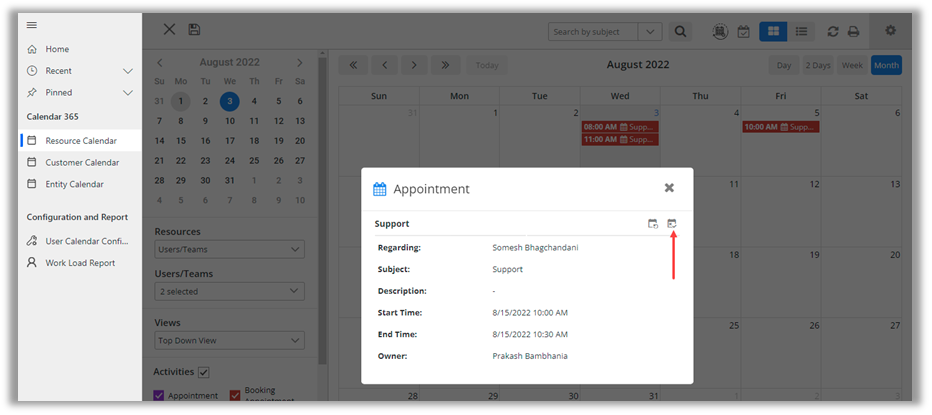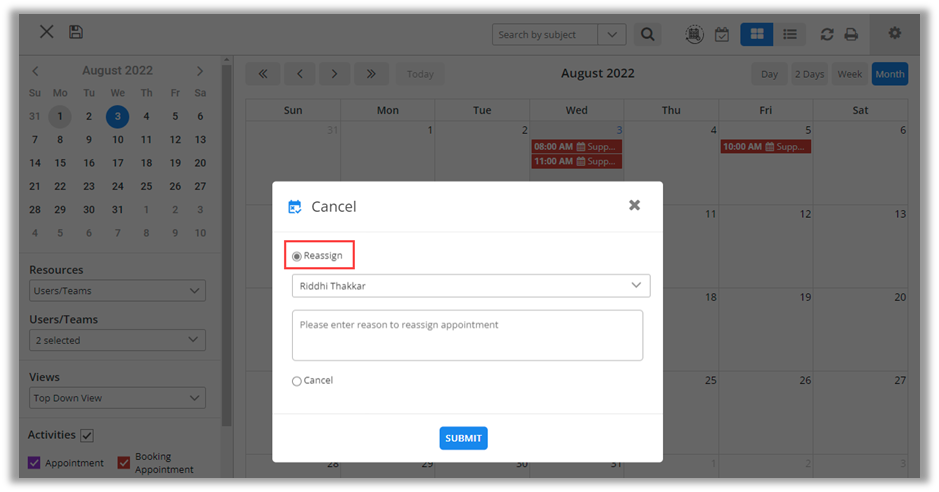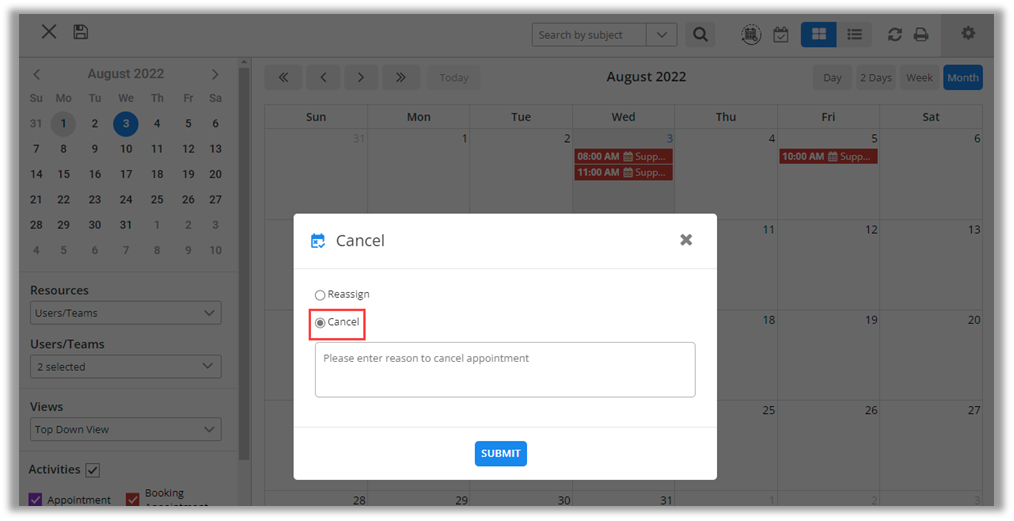Dynamics CRM- Calendar 365
Dynamics CRM- Calendar 365
Version: 7.0
Compatibility:
Microsoft Dynamics 365 (Online and On-premise)
Browser Compatibility:
Edge (v12) and above, Firefox (v29) and above, Chrome (v33) and above, Safari (v7.1) and above, Opera (v20) and above
About Dynamics Calendar 365
Introduction
Calendar 365 from AppJetty is a calendar solution for Dynamics CRM. This solution by AppJetty helps you to manage your activities. It also lets you create and manage your own desired activities through Custom Activities.
With this plugin Admin User can manage the activities and the tasks in two different calendars namely Resource Calendars for the users and the Customer calendar for the customers (clients).
Apart from managing activities, you can view holidays of the country specified by the admin. Later, if the activity related actions are performed, you can Complete or Cancel the activities.
Pre-requisites
Following steps must be followed before starting the Plugin installation:
First, you should be logged into Dynamics CRM Online.
New changes
As per the latest version of Calendar 365, the following topics are updated or newly added:
– Simplified UI/UX for the calendar configuration
– Share Booking links with employees or customers (external users), and they can book the appointments as per your time slot
– Configure Appointment booking link sharing to your customer
– E-mail Reminders for each Appointment action, i.e. On Booking/Rescheduling/Cancellation
– Feature to create working hours for every calendar user as per their availability
Calendar 365- Installation & Configuration
Calendar 365- Installation & Configuration
Calendar 365 Installation
Installation Steps
To install the “Calendar 365” plugin, the following steps are to be followed
On purchasing the plugin, you will get a zip file named Calendar365_v7.0.zip
Login into your CRM Account and click on Settings -> Solutions.
Click on ‘Import’ to upload and install the Solution.
Click on Choose File button and choose the Package Zip File for Calendar 365 from the “Import Solution” Window.
After selecting the Zip file, click on Next for further processing.
Check the box to enable any SDK message processing steps included in the solution and click on ‘Import’ button to Import the Solution.
It opens the new window that shows the process of importing solution.
Click on Close button after successful completion message is displayed.
Once you import the solution, it will be displayed in the solutions grid view.
Free Trial and Activation
Click on ‘Calendar 365’ display name to configure the plugin with your license key.
This will open a new window. Click on ‘Configuration’ from the options provided on the left side panel of the page.
You can purchase the licensed version any time. To purchase the license, click on ‘Buy Now’ button.
Your trial will activate, and expiry date will be displayed on top.
You can activate your one-month free trial. To get a one-month free trial license key fill out the details and click on ‘ACTIVATE’ button.
On expiration of Trial, a message will appear that the trial has expired. Now to purchase the license, click on ‘Buy Now’ button.
This will redirect you to our product page and a pop-up will appear. Click on ‘Add to Cart’ button and complete the purchase process.
On successfully completing the purchase process, you will receive your license key via email along with steps to complete the license configuration.
Click on ‘Activate’ button to activate your license. After submitting the valid license key, you will be navigated to the Setup tab.
After inserting the ‘License Key’, your Calendar 365 will be activated.
Under the License Details, You can manage the Users as well.
Calendar 365 Default Configuration
To configure the Calendar 365 settings, click on the ‘Gear’ icon available on the Calendar main page.
By clicking on the ‘settings’ icon, you will navigate to the Calendar 365 settings to manage the calendar view and activities to be displayed on the calendar.
You will get three main tabs: Profile, Setup, and Entity Calendar.
– Profile: You can check your activation (license) details and manage the Dynamics CRM users.
– Setup: You can configure the default views and options for the calendar and activities.
– Entity Calendar: You can configure the entity-specific calendar.
You can manage Default Configuration settings from here for:
Calendar Settings
Additional Settings
Resource Scheduling
Notification
Auto Refresh
Holidays
Locations
Owner’s Color Configuration
Note: User having System Administrator or AppJetty Calendar 365 Administrator role can configure the Default Configuration Settings.
Calendar Settings
You can set up the calendar options and set default values for the activities.
You can configure the following settings:
– Calendar Representation: You can set any of the Default representation of the calendar from the following:
Gantt View > Top Down View > Timeline View > Agenda View
– Time Scale Representation: You can set the default Time Scale View of the calendar from the following:
Day > Week > Month
– Time Format: Select the time format to display on the Calendar. Select 12 Hour Format or 24 Hour Format.
– Regarding: You can set the default ‘Lookup Record’ entity.
– Weekend: Checkmark this option to display the weekends on the calendar. Keep it Disabled if you want to display the 5-Day calendar.
– Set Custom Number of Days: Select the number of days in which you would like to view the calendar from the Day Span View.
– Calendar Title Format: Select the format to display on Calendar. The format that you select here will be displayed when you select Day, Day Span, and Week view for Calendar.
– Upcoming Events: You can select the default time span for the upcoming events to be shown in the calendar. You can select any of the default views for ‘Upcoming Events’ from the Day, Week, or Month.
– User Configuration: Enable this feature to apply the user-level setup (Logged In Account) to the calendar.
Note: If this feature is not enabled, then the global level set up will be applied to the calendar.
Time Allotment Configuration
– Slot Duration: Select the slot durations for Day views from 15, 30, 45, and 60 Minutes.
– Minimum/Maximum Duration: You can set the minimum/maximum time for the Calendar Time block in the Day/Week view. You can define the duration of availability or the Working Timings default.
By default, for Minimum value is 00:00 and the Maximum value is 24:00. You can insert the availability hours of the day here.
Activities Configuration
– Activities Redirection: You can select the activity view redirection to view the activity details. You can decide where to navigate to check the activity details either in the Popup View or in the CRM View.
‘Popup View’ will display the activity details in the popup while the ‘CRM View’ will display the CRM form details.
– Overdue Activities: By selecting ‘Yes’, the expired activities will be highlighted with a ‘red’ alert mark.
Note: The entities that are added from the setup page will be available in the calendar for users to select from.
– Activity Visibility: If you have enabled this option, you can visualize the activities into the calendar that are set as required.
Custom Configuration
– Contact Calendar: You can select entities related to the contact you want to include in the calendar. Entities related to contact are Leads, Opportunity, Case, Quote, Sales Order, Invoice.
– Account Calendar: You can select entities related to the account that you want to include in the calendar. Entities related to account are Leads, Opportunity, Case, Quote, Sales Order, Invoice.
After configuring the “Calendar Settings” click on the Save button.
Additional Settings
– You can configure the additional settings related to the activities as below:
– Team: By enabling the “Team”, you can display the “Team” resources of the default CRM under the ‘Resource’ tab of the Resource Calendar.
– Business Unit: By enabling the “Business Unit”, you can display the “Business Unit” resources of the default CRM under the ‘Resource’ tab of the Resource Calendar.
– Enable Email: You can enable the ‘Email’ option to send an Email to the Required/Optional attendees when the activity is created. Enable the switch to enable the Email facility. When the users add the appointment activity, the Email will be sent to the selected Required/Optional attendees (CRM Users/Teams).
– Quick Create Form: You can enable this option to create an activity by navigating the CRM Backend page (CRM From view). You will need to select the activity first and for inserting the details, the CRM Form view will open.
– Conflict Management: To get alerts for conflicting activities based on time, check the Active box to enable conflict management in the calendar. On enabling conflict management, you get an alert message for each activity.
– Unscheduled Activities: To manage the unscheduled activities, check the Active box. By default, it is disabled. By enabling the Unscheduled Activities option, you get to manage unscheduled appointments and service activities without required attendees and assigned resources respectively from the calendar.
Report
– Workload Report: You can enable the “Workload Report” in the calendar to check and filter the activities as per the time duration and select the Users/Teams. Enable the switch to enable the Workload Report in the calendar view.
After configuring the “Additonal Settings”, click on the Save button to apply the changes to the activity calendars.
Resource Scheduling
– Resource View: Enable this “Resource View” option to enable the Resource Scheduling option in the calendar.
Personalization
After enabling the Resource Scheduling feature, select the colors for the different activities like Available, On Break, Approved Leave, Rejected Leave, and Pending Leave.
Timeslot Configuration
You can also set the leave as per your requirement. You can set the time duration for the First Half & Second Half. This duration will work whenever someone will apply for the leave from the calendar.
After configuring the “Resource Scheduling ”, click on the Save button to apply the changes to the activity calendars.
Notification
– Enable Notification Reminder: You will get the notification reminder about upcoming activity when you are on the Calendar page.
– Receive Notification for the appointment: Set the minutes to be notified just before starting the activity.
– Enable Desktop Notification: You will get the notification reminder about upcoming activity as Desktop Notifications.
-
- Receive Notification for the appointment: Set the minutes to be notified just before starting the activity.
For Staff
You can enable the Emails for staff whenever the appointment is Booked/Rescheduled/Cancelled.
– Remind Upcoming Appointments: Enable this option and set the duration before which you will get the email reminder of appointments.
For Customers
You can enable the email for customers whenever the appointment is Booked/Rescheduled/Cancelled.
– Remind Upcoming Appointments: Enable this option and set the duration before which you want to get the email reminders of appointments.
After configuring the “Notifications”, click on the Save button to apply the changes to the activity calendars.
Auto-Refresh
You can now set up your map to Auto Refresh, without refreshing it manually. Navigate to the Auto Refresh section and configure the following details.
– Auto Refresh: Enable this option to refresh the resource and customer calendars.
– Set a Duration: Set the number of minutes you want to auto refresh the calendar.
After configuring the “Auto Refresh”, click on the Save button to apply the changes to the activity calendars.
Holidays
To manage the holidays, click on the ‘Holidays’ section and configure the following details:
– Display Holidays: Enable this option to display the holidays.
– Appearance Customization: Set the color to be displayed for the Holiday in the calendar using the color picker tool.
– Google Calendar API Key: Insert the Google Calendar API Key.
– Select Country: Select the country whose holidays are to be displayed in the calendar.
After configuring the “Holidays”, click on the Save button to apply the changes to the activity calendars.
Custom Holiday
– Import Excel Sheet: You can import the CSV file of the holidays and display into the calendar. You need to follow the Sample CSV File format to upload the CSV file here. You can also download the Sample CSV File for the reference.
After configuring the “Custom Holidays”, click on the Save button to apply the changes to the activity calendars.
Locations
Keep the location feature active and insert the Google Autocomplete API key.
After configuring the “Locations”, click on the Save button to apply the changes to the activity calendars.
If enabled, you need to enter Google Autocomplete API key that you have in order to get location suggestions.
Note: To generate the Google Autocomplete API Key refer to: https://developers.google.com/places/web-service/autocomplete. You can directly navigate to this page from the configuration page by clicking on the available link.
Owner’s Color Configuration
To define the color of the activities based on owner that is CRM users. By enabling this option, you can differentiate the user wise activities in different color on the calendar.
By ‘selecting’ the Owner Active checkbox, you will navigate to the Owner’s color Configuration.
-You will get the list of the CRM Users. Using the ‘Color picker’, you can choose the color for the specific users.
-After selecting the color for the users, click on the Save button to save the configuration.
Note: Owner-wise color will appear only in Resource Calendar.
Activities
It will include tabs for Task, Fax, Phone Call, Email, Letter, Appointment, Recurring Appointment, Service Activity, Campaign Activity, Bookable Resource Booking and Custom Activity. You can configure all the activities individually.
Each of the activity tab will contain following fields:
– Enable: You can enable the activity to display any activity in the calendar by default.
Personalization
– Color Configuration: You can select the default color for the activity to be displayed in the calendar.
– Custom Color Configuration: You can select the custom color configuration from “None”, “By Status” or “By Priority”.
Layout Customization
– Hover Settings: Select the field to be displayed whenever someone hovers on the Calendar event.
– Start Date: View the activities on the calendar based on the selection of its action. Select the action for the Start Date.
– Title Settings: You can select the title attribute to be displayed as the title of activity in the calendar. The ‘Title Attribute’ comes with the default selection of the Subject attribute. You can select only one attribute from the list of different attributes.
– Pop-up Settings: Select the field to be displayed whenever someone clicks on the Calendar event.
– End Date: View the activities on the calendar based on the selection of its action. Select the action for the End Date.
– Buttons Configuration: Select the action buttons that you need to include in the calendar. These action buttons are the ones which if enabled lets you perform those actions directly from the calendar.
Action Buttons (Buttons Conf.)
All the following activities have different action buttons to perform:
Here activities like Task, Fax, Phone Call, Letter, Appointment, Service Activity, Custom Activity have actions buttons for:
> Convert to Opportunity > Convert to Case > Mark as Complete > Mark as Cancel
Note: Different activities will have different action buttons (button configurations). You will get the Buttons Configuration as per the configuring the specific activity.
All the following activities have different action buttons to perform:
– Email Activity: ‘Email’ has Convert to the Lead button.
– Recurring Appointment: ‘Recurring Appointment’ activity has an End Series button in addition.
– Campaign Activity: ‘Campaign activity’ has a Close Campaign Activity button in addition.
– Bookable Resource Booking: ‘Bookable Resource Booking’ has an Activate and Deactivate button.
After configuring all the activities, click on the Save button to save the configuration.
Entity Calendar
You will have the Entity Calendar to get the entity-specific activity records in the calendar.
Structure Configuration
Configure the default view of the Entity calendar under the ‘Views’ section. By configuring the individual setups/options, you can define the view of the Entity Calendar.
You can configure the following settings:
– Calendar Representation: You can set any of the Default Calendar View of the calendar from the following:
Gantt View > Top Down View > Timeline View > Agenda View
– Time Scale Representation: You can set the default Time Scale Representation of the calendar from the following:
> Day > Week > Month
– Time Format: Select the time format to display on Calendar. Select 12 Hour Format or 24 Hour Format.
– Weekend: Checkmark this option to display the weekends to the calendar. Keep it disabled if you want to display the 5-Day calendar.
– Set Custom Number of Days: Select the number of days in which you would like to view the calendar from the Day Span View.
– Calendar Title Format: Select the format to display on Calendar. The format that you select here will be displayed when you select Day, Day Span, and Week view for Calendar.
– Upcoming Events Duration: You can select the default time span for the upcoming events to be shown in the calendar. You can select any of the default views for ‘Upcoming Events’ from the Day, Week, or Month.
Time Allotment Configuration
– Slot Duration: Select the slot durations for Day views from 15, 30, 45, and 60 Minutes.
– Minimum/Maximum Duration: You can set the minimum/maximum time for the Calendar Time block in the Day / Week view. You can define the duration of availability or the Working Timings default.
By default, for Minimum value is 00:00 and the Maximum value is 24:00. You can insert the availability hours of the day here.
Plug In
– Quick Create Form: You can enable this option to create an activity by navigating the CRM Backend page (CRM From view). You will need to select the activity first and for inserting the details, the CRM Form view will open.
Auto Refresh
You can now set up your map to Auto Refresh, without refreshing it manually. Navigate to the Auto Refresh section and configure the following details.
– Auto Refresh: Enable this option to refresh the resource and customer calendars.
– Set a Duration: Set the number of minutes you want to auto refresh the calendar.
Advanced
After configuring the Settings of the Entity Calendar, you can configure the Advanced configuration of the Entity Calendar.
Under this section, you can configure the CRM Entities to display on the calendar of Calendar 365. You need to configure the attributes and details of the entity to display on the calendar.
If the entity is already created, you will get on the list.By default, you will get the Personalization, Layout Customization, and Custom Customization options.
Personalization
– Entity: Select the CRM Entity to create an Entity calendar for that. You will get the Entity’s drop-down list.
As you select the entity from the list, the default attributes & fields will be selected based on which Entity is selected.
– Entity Calendar Name: Insert the relevant Calendar name to identify.
– Default Color: You can select the entity color to identify on the calendar. Choose the relevant color for the entity from the Color Picker tool.
– Custom Color Configuration: You can select Fields of the Entity to display the entity as per the Field’s values in a different color.
Ex. If you have selected the field “Component State” of the entity, you can select the color for its Fields Published, Unpublished, Deleted, and Deleted Unpublished.
Layout Customization
Hover Settings: Select the field to be displayed whenever someone hovers on the Calendar event.
Pop-up Settings: Select the field to be displayed whenever someone clicks on the Calendar event.
– Start Date: View the entity records on the calendar based on the selection of its action. Select the action for the Start Date. i.e., Created On
– End Date: View the entity records on the calendar based on the selection of its action. Select the action for the End Date. i.e., Actual Close Date
-
- Title Attribute: You can select the title attribute to be displayed as the title of entity records in the calendar.
- The ‘Title Attribute’ comes with the default selection of the Name attribute. You can select only one attribute from the list of different attributes.
Custom Customization
– Form Attribute: Select the fields which will be visible to the user while Creating/Editing/Copying the event.
– Filter By: Select an attribute to filter the entity records as per which attribute. i.e., Created By
– Search by Attribute: Select the attribute to search the entity records by inserting the text in the entity calendar.
– Share Calendar: While creating the entity with attribute configuration, at that time you can decide whether you want to share with everyone or need to share with the specific CRM users/teams.
If you enable the Public, it will be shared with everyone. But if you enable the Private, you need to select the CRM users/teams from the dropdown list.
Once the attributes & required fields are selected for the Entity calendar, click on the Save button.
You will get the alert message that the entity for the calendar is added and that the Entity to display in the calendar will be listed.
Configure Languages
You can also configure language of your choice by clicking on Configure Languages button available on Configurations page.
On configure language page, select the language from dropdown that you wish to configure messages for.
Here, user needs to add translations themselves for the messages in the language of their choice.
Click on save button to save the language translations.
Note: For configuring languages, the user first needs to manage language settings from CRM. Languages that are selected in CRM can be configured for the calendar.
Other Configuration for Calendar 365
Multi-language Calendar labels
You can select the different languages for the labels of the default CRM on the Calendar365.
Navigate to Settings -> Personalization Settings -> select the Language From here, select the language for the User Interface in which you want to see the labels for Calendar 365.
After selecting the language, click the OK button to save the settings. Now, you can see the labels in the Calendar365 as per the selected language.
Dynamic Date Formats
Navigate to Settings -> Personalize Settings -> Formats to select the Date & Time Format to display in the date & time picker of the Calendar365.
Now click on the Customize button, the Customize Regional Options window will open.
You can select the Date Format i.e. MM/DD/YY or DD/MM/YY and Separator.
Based on the format selection here, you will get the date format in date picker of Calendar365.
Assign User Role:
To manage the user roles, navigate to Settings -> Security -> Users.
Now select the users whose roles are to be managed and click on ‘MANAGE ROLES’. This will open a pop up to select roles.
To access AppJetty product entities, assign ‘AppJetty Calendar 365’ role to selected users.
Note: System Administrator will also be able to access AppJetty Product Entities.
Assign User Role
To manage the user roles, navigate to Settings -> Security -> Users.
You will get the list of the users (CRM Users).
Now, select the users whose roles are to be managed and click on the MANAGE ROLES option. This will open a pop-up to select roles.
To access AppJetty product entities, assign ‘AppJetty Calendar 365’ role to selected users.
Note: System Administrator will also be able to access AppJetty Product Entities.
User wise Calendar 365 Configuration
When any role is assigned to the CRM users like AppJetty Calendar 365/AppJetty Calendar 365 Administrator or System Administrator role, you can configure the Calendar 365 users’ role details and accessibility.
To manage and configure the user-specific role, click on the User Calendar Configuration from the Calendar 365 navigation panel (left panel).
By navigating to User Calendar Configuration, it would show the list of all the users with Calendar 365 or System Administrator role.
Note: These configurations are user-based configurations, and they will be set as default. When the specific users open the calendar, they will get the calendar view and activity-related details as it set from the User Calendar Configuration.
By clicking on any user, you can configure the user’s default calendar view and activity-related details.
You will find the “Calendar 365 Configuration” from the details page of the user. You will find the General Settings and Activities configurations under the Calendar 365 Configuration.
You can configure the Calendar Settings, Additional Settings, Notifications, Working Hours Booking Link, and Set Primary Preferences individually for the specific users. You can decide the functionalities and views that you allow the users to access.
The Calendar Settings, Additional Settings, and Notifications are as same as the main Calendar Configuration. But some of the configurations are provided at the user level only and you can find those settings under the “Additional Settings”:
– Create Activity: Allow users to create an activity or not. By clicking on the switch, you can enable/disable this option.
– Drag and Drop Activity: You can drag and drop the activity to modify the details like scheduled date, change the user for the activity, etc. So, you will not require to open activity manually. By clicking on the switch, you can enable/disable this option.
Note: Only the admin users can drag and drop the activity. While normal CRM users can see the drag and drop option, but they will have no right to access them.
Working Hours Booking Link
In this section, you can set the time slots of appointments for your customers on daily basis. Checkmark the day and insert the time slots as per requirement.
You can add the new time slot by clicking on the “+” icon.
You can also Delete the time slot by clicking on the “Delete” icon.
In the same way, you can configure the time slots for each day.
Set Primary Preferences
– Scheduling Interval: Set the interval time for slots.
– Time Zone Presets: Set the time zone.
– Booking Notice: Set the duration in which you want to remove the slots for appointments until that duration.
– Cancellation & Reschedules: Set the duration before which you do not want to give the Cancellation and Rescheduling option.
The remaining setting is as same as the main calendar configuration. After configuring the user-wise calendar settings, click on the Save button to apply the changes for that specific user.
You can also configure the activities at the user level. Here, activities related to all the configurations and settings will be as same as the main Calendar 365 configurations.
After configuring the user-wise “Activities”, click on the Save button to apply the changes for that specific user.
If “Enable User Configuration” is enabled
If this feature is enabled from the Setup then the calendar configuration of the logged-in user will be applied to the calendar.
Also, you do not need to add the user manually once you enable this feature. After enabling “Enable User Configuration”, you will get the Configuration All Users button at the top. Once you click on this button, new users will be added without manual work.
Note: Only those users with the Calendar Appjetty normal or administrator role can be added.
Calendar View & Functionalities
Calendar 365: “Calendar View & Functionalities”
Version: 5.6
Compatibility:
Microsoft Dynamics CRM 2016(v8.0) and above (online and on-premises) and PowerApps
Browser Compatibility:
Edge (v12) and above
Firefox (v29) and above
Chrome (v33) and above
Safari (v7.1) and above
Opera (v20) and above
Create Entity Records
To create records, navigate to the Entity Calendar and click on the date on the calendar that you want to add the record to.
As you click on the date, a “Create Record” popup will appear on your screen.
You need to select the required record from the list. You will get the list of the entity fields as enabled from the calendar configuration (Form Attributes).
Account Name: Enter the account name.
Account Number: Enter the account number.
Category: Select the category of the record.
Description: Enter the description as per your requirement.
Email: Enter the email address of the record.
Industry: Select the industry of the record.
Main Phone: Enter the main phone number of the record.
Number of Employees: Enter the number of employees.
Owner: Owner (Current log in user) will be pre-filled in the record or you can also search for other owners as per your requirement.
You can search the owner’s name as per your requirement and add to the record.
If you are not getting the user then you can open the Advanced Lookup.
Website: Insert the website of the record.
After entering the information, click on the Create button, if all the information is correct then it will be created on your calendar.
Now you can view the added record on the calendar.
You can also view the detail of the created record by hovering the mouse over the record. You can also change the field in the detail view as per your requirement from the calendar configuration.
Note: You can only display upto ten fields in the detail view.
Quick Create Activity (CRM Form)
If you have enabled Quick Create Form option from Calendar Configuration ➤ Advanced Settings, you will get the CRM backend view (CRM Form View) to create the activity.
After inserting and selecting the required details, the activity will be created.
Edit Record
Click on ‘Edit’ icon to edit any created activity.
On clicking edit icon, it opens activity details in edit view.
Update or change the details and then click on Update button to save changes to the activity.
Copy Record
Click on copy event icon, to copy activity details. Clicking on copy icon you can edit all the details if required.
Click on Create button to create a duplicate of the record.
View Record
Clicking on the ‘View’ icon, the record will be shown on CRM page with all the details.
Delete Records
Clicking on ‘Delete’ icon, the activity can be deleted from the Calendar page permanently.
Clicking on Delete icon, a warning pop up message will appear to confirm the action.
Calendar Management
Calendar 365
To open the Calendar 365, following steps must be followed:
Go to AppJetty -> Calendar 365
Here, you get two calendars: Resource Calendar & Customer Calendar.
Resource Calendar: It is for User and Facility/Equipment.
Customer Calendar: It is for Contacts and Accounts.
If you want to manage activities for the Users/Teams, Bookable Resource or Facilities/Equipment, select Resource Calendar while to manage activities for Contacts/Accounts (clients), select Customer Calendar.
Calendar page would load, and all the activities will be displayed in the calendar as per the default configuration made from the settings.
Resource Calendar
The calendar is separated in two: Resources Calendar and Customer Calendar.
To view the navigate to ‘Resources’ section on the left-hand side of the calendar
Resource Calendar: “User/Teams”, “Resource Booking” and “Facilities/Equipment” resources can be found in Resource Calendar.
If User/Teams option is selected as resource, it displays list of users in multiple selection dropdown. User/Teams is a user and a member of your organization.
If you have selected the User/Teams as “Resources”, the list will be displayed, and you can enable/disable the Users/Teams by selection.
If Business Unit option is selected as “Resources”, it displays the business units of the organization like departments or divisions that have separate products, customers, and marketing lists.
If Bookable Resource option is selected as “Resources”, it displays list of Bookable Resource in multiple selection dropdown. A Bookable Resource in Field Service is anything that needs to be scheduled. Scheduling Board for Field Service & Project Service Automation.
If Facilities/Equipment is selected as “Resources”, it displays list of facility/equipment in multiple selection dropdown. If the resource is a physical space that needs to be scheduled, such as a building or room, select Facilities/Equipment.
As you select the “Resource”, you will get the records based on that.
Customer Calendar: You will get “Accounts” and “Contacts”.
If Contact is selected as resource, it displays list of contacts in multiple selection dropdown. These are available only when contacts are selected from the dialog box.
If Account is selected as resource, it displays list of accounts in multiple selection dropdown. These are available only when accounts are selected from the lookup dialog box.
Based on Customers selection, activities in the calendar will be displayed.
Note: Only the system administrator can view the calendar along with the activities of all the users or resources. Other users can view the calendar of only their team or an individual depending on their respective role.
– Activities that have account or contact mentioned within regarding field, those activities are viewed in calendar upon selection of that account or contact, respectively.
Entity Calendar
By clicking on the “Entity Calendar”, you will check the entity records on the calendar as you have configured under the “Entity calendar” from the Calendar setup.
From the left navigation, by clicking on the “Entity Calendar” dropdown, you will get the list of Entities that you have configured.
Once you select the “Entity”, the “Lookup Records” side window will open to select the CRM records.
Click on the ‘search’ icon (magnifying glass) from the Lookup Records to get the CRM records for the selected entity to display the entity records.
You can select the multiple CRM records that are required to get their activity records. You can also expand the Lookup Records with more search options by clicking on the “Advance lookup”.
After selecting the CRM records from the list, click on the Add button.
The selected records will be displayed in the Filter dropdown. The entity records will be displayed for the selected CRM records on the calendar.
As per entity attribute selection, you will get the values for the selected entity, and based on that the CRM activity records will be displayed on the calendar.
You can also filter the data on the calendar by selecting its status i.e. Active and Inactive.
You can save the entity calendar for your future use, and it can be shared with your team members as well.
Related Entities
On selecting accounts or contacts as Customers, Related Entities dropdown is enabled from where user can select one or more related entity of account or contact related to which you want to view activities.
Note: Related entities dropdown will be shown only if entities are selected from the configurations page. And activities will be shown if these related entities have activities created within their record.
Owner wise Colorized activity
If you have enabled the owner wise color option and set the specific color to different owners, the activities of the different owners will appear on the Calendar based on the Owner’s color.
On the Calendar, user can see the colorized activities based on the selected color for the specific owner (users). e., the orange color activities belong to the user Milenia Den, the green color activities belong to the Joseph Den and the blue color activities belong to the Kat Den.
These Color specific activities option helps admin or users to clarify the activities.
Note:
– The user can see different color combinations activities for specific users only under Resource Calendar.
– Once you have selected the Owner Color option, the individual color of the activities will be disable and the user wise colorized activities will display on the calendar.
Activity Details
Setup for Hover Settings:
To setup the Tooltip view of activity, navigate to Setup ➤ Activities, you will find the ‘Hover Settings’ under the Layout Customization.
Tooltip on Calendar
Hover the mouse on the activity, then the activity details can be seen in tooltip view.
Pop-up Settings:
To setup the Detail view of activity, navigate to Setup ➤ Activities, you will find the ‘Pop-up Settings’ under the Layout Customization.
Activity Detail view on Calendar
By clicking on the More options (Three Dots) icon, you will get an additional options like Follow up meeting, Add/View Note, Copy, Share, Reassign, Mark as Complete, Mark as Cancel, Convert to Opportunity, & Convert to Case.
Left side panel options
Activities
To manage the activities which are to be displayed in the calendar, navigate to ‘Activities’ section on the left-hand side of the calendar.
Thereafter, check the checkbox besides the activity to display the particular activity in the calendar. Here it will show only those activities that are enabled from the configurations page.
Status
To view the activities as per their statuses, navigate to ‘Status’ section and check the checkbox besides each option to display the activities with statuses in the calendar.
Note: If you have selected the Overwrite Color by Status in activity configuration, the status of activity can be displayed in that color which is selected in ‘Overwrite Color’ option.
Priority
Now to view the activities as per the priorities, navigate to ‘Priority’ section and check the checkbox besides the priority.
This would overwrite the actual color of the activity and display the activity in the color as per the priority of the activity.
Weekends & Holidays
To enable / disable weekends in the calendar navigate to the ‘Weekends’ section.
To enable weekends select ‘On’ button.
To disable weekends, select ‘Off’ The columns of ‘Saturday’ and ‘Sunday’ will disappear.
To enable holidays in the calendar, navigate to the ‘Holidays’ section and check the checkbox.
By checking the checkbox besides ‘Holidays’ section, you can view all the holidays in the calendar which is by default in black colored background.
Note: Holidays will be displayed as per the country selected by the admin from the Calendar 365 Configurations.
Left Side Panel Options
Activities
– To manage the activities which are to be displayed in the calendar, navigate to ‘Activities’ section on the left-hand side of the calendar.
– Thereafter, check the checkbox besides the activity to display the particular activity in the calendar. Here it will show only those activities that are enabled from the configurations page.
Status
– To view the activities as per their statuses, navigate to ‘Status’ section and check the checkbox besides each option to display the activities with statuses in the calendar.
Note: If you have selected the Overwrite Color by Status in activity configuration, the status of activity can be displayed in that color which is selected in ‘Overwrite Color’ option.
Priority
– Now to view the activities as per the priorities, navigate to ‘Priority’ section and check the checkbox besides the priority.
– This would overwrite the actual color of the activity and display the activity in the color as per the priority of the activity.
Weekends
– To enable / disable weekends in the calendar navigate to the ‘Weekends’ section.
– To enable weekends select ‘On’ button.
– To disable weekends, select ‘Off’ button. The columns of ‘Saturday’ and ‘Sunday’ will disappear.
Holidays
– To enable holidays in the calendar, navigate to the ‘Holidays’ section and tick the checkbox.
– By ticking the ‘Holidays’ checkbox, you will get the drop-down list of holidays if you have added the multiple CSV files of the holidays.
– Here, you will get the default selected holidays if you have selected any default from the Holidays configuration.
– You will see all the holidays in the calendar which is by default in a black-colored background. If you have selected the specific color for the holidays from “Calendar Configuration → Holidays” in the “Color” field, you will get the Holidays details in that color.
Note: Holidays will be displayed as per the country selected by the admin from the Calendar 365 Configurations.
Upcoming Events
To view a list of upcoming events, navigate to ‘Upcoming Events’ section, from here you can select the type of view and view the upcoming events as per the ‘Day’, ‘Week’ or ‘Month’ format.
Upcoming events will be displayed based on resource selected.
Example: If account is the selected resource type, it displays upcoming activities related to the accounts selected.
Follow Up Appointment
You can create follow-up meetings when you want to discuss recurring topics or previous meeting topics that were not closed in an earlier meeting.
There are two ways you can create follow-up appointments – All Appointments, and Inside Appointments.
All Appointments
Once you click on the Follow Up Icon, you will get the list of “All Appointments”. You can filter the appointments by entering the Start & End Date. You can also search the appointments.
To create a follow-up appointment, click on the “+” button of the particular appointment.
Once you have clicked on the button, Create Follow-Up pop up will open up where you have to fill in the information.
After filling in the information, click on the Create button.
When the user clicks on the Appointment, it will get all the information related to the following appointment.
Inside Appointment
You can also create a follow-up meeting by clicking on the particular appointment.
Click on the Follow-up Appointment icon, fill in the appointment details and click on the Create button. You can also view the parent appointment details by clicking on the “Parent Appointment” link.
Once the follow-up is created, it will be listed under the respective appointment on the calendar.
Save and Share Calendar Views
You can also Save and Share any calendar view in Resource Calendar and Customer Calendar for future reference.
Left panel Settings like selected resources, selected calendar view as well as, activities, selected status, priority, weekends and holidays get saved on saving view.
You can save the calendar view on resource selection. If certain calendar settings are saved for user resource type, that calendar view will not be available to accounts or contacts.
To save a view, click on ‘Save’ icon available on the left side of the calendar.
After you click on ‘Save’ icon, a dialog box opens, where you need to define the calendar view. Along with naming, you can define if it’s public or private.
By default, ‘Is Public’ check box is checked. If calendar is public, it is visible to all CRM users with AppJetty Calendar role under shared calendars section.
Click on ‘Save’ button to save the calendar view.
On the header, the ‘Calendar View name’ will be appeared in left side.
You can see the list of Saved Calendars from the drop-down list of Calendar name.
By click on any saved Calendar name, you can check that Calendar view.
View Saved Calendar list
Users can access saved calendar views by clicking on right icon that indicates the View Calendars.
After you click on that icon, a dialog box opens with dropdown named “Calendar Views” to check and edit the Calendars from the list.
Under the Calendar type, the user can check the ‘Saved Calendars’ and ‘Shared Calendars’ by other users/teams.
‘Saved calendars’ are the one which you have created and saved while ‘shared calendars’ are the one that are shared with you by other users or the calendars that are made public by other users.
Based on Calendar Type selection, you get list of calendars.
From the Saved Calendars list, you can see the View name with their actions. You can select a default calendar by pressing + icon.
For saved calendar and being the owner of that calendar, you can View, Edit, Delete and Share calendar. ‘Share’ option is available only when calendar is private (should not select as ‘Is Public’).
Also, different actions are available only when you are the owner of the calendar, else it just shows the preview icon.
Clicking on edit calendar, particular saved calendar opens so as to edit it as required and along with that shows update calendar view icon to update calendar.
Save Calendar View for Entity Calendar
Similarly, you can save the Entity Calendar. By clicking on the ‘Save’ icon, you will get the popup to insert the calendar name. You can decide whether you want to share with others or keep it private only for your use.
Click on the Save button to save the Entity Calendar. You will get the drop-down list of the saved calendar.
You and CRM users can access the saved calendar views by clicking on the ‘right’ icon that indicates the View Calendars.
You can manage and perform the required action like view, edit, delete, and make a default for the saved entity calendar.
Share ‘Saved Calendar’ Views
Clicking on shared icon, you can share Calendar with other CRM users or team.
Clicking on ‘Share’ icon, opens dialog box to select user or team from the look up records box. After selecting user, click on Save button to complete the calendar sharing. You can select multiple users and teams to share calendar with.
You can select the Users/team with whom you want to share the Saved Calendar view.
A Calendar view shared by others can be seen by selecting ‘Shared Calendars’ option.
When saved calendar is previewed, it enables a button to go back to the current view (previous view).
Share Appointment Activity
You can also share the appointment with other users (team members) at the same time when you are creating an Appointment activity.
You can pre-select CRM records to share the Appointment activity with them when appointment creates. You can select the Required & Optional records from the activity configuration under the Calendar Settings to share the Appointment activity.
As you have selected the records, it will be pre-selected during the ‘Appointment’ activity creation.
You can remove the records from Required & Optional as per your requirement if you do not want to share the appointment with some of the selected records.
You can add more records into Required & Optional by clicking on the Search icon. You will get the Lookup Records popup from there you can select other records as per your requirement.
Once the appointment is created, the other user will also get the appointment in their calendar.
Activity Grid View of Calendar
To get list view of all activities, navigate to ‘list’ button on the calendar and along with that select time span from Day, Month or Year from the dropdown.
By clicking on ‘List’ icon, the list of events will be displayed Day wise by default. You can change to Week or Month.
List view works based on small calendar available on left side of the calendar view. You will get the list of events based on day/date selected in the smaller left side calendar.
For Day span, it shows list of events that fall under the days that are selected.
For Week time span, it shows list of events that fall under the week in which the selected day is part of.
For Month time span, it displays events of months to which the selected day is part of.
From list view, you can perform multiple actions like:
Exporting records to CSV, Excel, PDF
Copying records,
Printing records and Set Regarding for the selected records.
Set Regarding under Grid View
To set regarding for the records, select the records and click on Set Regarding button.
This opens set regarding record dialog box to select record from the look up dialog box.
After selecting click on ‘Save’ button to set regarding for the record. As you click on Save button, the popup message will be appeared to set regarding,
Resource Scheduler (Manage Working Hours)
In the Calendar365, you can enable the “Resource Scheduler” from the settings and you can schedule the activity based on the added working hours.
If the “Default (User Working Hours)” option is selected, User only can view the working hours on the AppJetty Calendar view based on the default CRM user option.
But if the “AppJetty Scheduler” option is selected, User can add the working hours from AppJetty Calendar and schedule the activity based on the Working Hours. You can also manage the working hours, break timings and the leave in Calendar365.
Set the Working hours for default CRM users:
To set and edit the working hours in CRM, navigate to Advanced Settings -> Security -> Users -> Select user for which you want to set working hours.
Besides the Username click on the down arrow and select Working hours.
By clicking on Work Hours, the default calendar of CRM will display with the records of the selected user if already inserted.
Now, by clicking on Set Up option, you can schedule the work on weekly basis or for one day by selecting the date.
You can select the Start & End Time including Break.
Later, you can also edit and delete the scheduled work hours.
Similarly, you can schedule the work for weekly basis by selecting the working days.
If you have selected the Default (User working hours) in “Resource Scheduling” option, you will get the working hours on the AppJetty Calendar which is set in CRM default calendar.
Note: You can only view the Working hours which is set in CRM default calendar of the user.
Add the Working hours in AppJetty Scheduler:
If you have selected the AppJetty Scheduler in “Resource Scheduling” option, you can add the working hours with availability and manage the leaves on the AppJetty Calendar.
You will get the Color combinations in the Calendar as per you have set from the Calendar settings. You can differentiate the availability and manage leaves by the colors.
First, you need to select the Resource Scheduler in the “Views” option from the right panel.
By clicking on the Resource Scheduler, you will get the “Availability” options as per Calendar settings.
Setup Schedule:
By selecting the Resource Scheduler, the Calendar with work scheduled records will display if already inserted else you can add the working hours on the AppJetty Calendar.
After selecting the required details for the Working Hours, click on the Create button to setup the working hours.
You can also setup the working hours for the more than one day by selecting the Recurring Type and selecting the Date Range with time duration.
From here you can select the Activity:
Marks as Available: Time slot for working hours.
Mark as Break: Time slot for break timings.
Mark as Leave: To create a leave.
Select Recurring Type for scheduling work for One Day or Weekly/Monthly basis (recurring).
Select the Starting & Ending Date & Time and select the required Owner.
After selecting all the details, click on the Create button to add the work schedule.
Once you create the working hours, it will display on the calendar as per date & time duration.
Create Activity as per Working Hours:
By clicking on the date & time for scheduling work, the Create Activity popup will appear to select the details related to schedule.
From here, you can again edit the Slot by clicking on Update Slot button if require.
In this way, you can schedule the work for the resources(users) based on their availability.
Manage Leaves:
If the leave is added by the team member (CRM users), it will be approved by the team manager (CRM users with Dynamics administrator rights).
Once the leave is added by the team member, the manager will also get an Email notification regarding the leave application.
The team member can see the Leave Approval status as per the Leave color combination from the calendar settings.
User Leaves
You will get the Leave requests of your team members (CRM users). From the Calendar header, you will find the leave icon.
You will get the popup named “User Leaves” with the leave requests of your team members (CRM users).
You can Approve/Reject the leaves as per your requirement.
When you approve, you will get the approve message on the screen.
Your team member will get the Approve status in their Working hours resource.
But when you reject the leave, you can insert the Reason behind that.
Your team member will get the Reject status in their Working hours resource.
Multi-language Calendar Labels
You can see the default CRM labels and Calendar365 captions in different languages based on the language settings in Personalization Settings from the CRM side and in the Settings from the Calendar365 side.
Note: To display the labels & caption in the same language, you must select the same language on the CRM side and Calendar365.
Calendar inside entity record
You can enable the calendar of the Calendar 365 for an individual CRM entity record. You will get the activities on the calendar inside the specific entity record from the DynamicsCRM backend side.
For that you need to configure the Form and the web resources for the entity. You need to follow the below steps to configure the calendar view inside the individual Entity record details:
Navigate to the DynamicsCRM Settings -> You will find the “Customize the System option” to create & modify the entity components.
By clicking on ‘Customize the System’, a new browser tab (Power Apps) will open to configure the components.
Click on the Entity (i.e. Account) -> ‘Forms’ to configure the record calendar.
Insert the Tab as per the layout that you want to be displayed. e. One Column. It will add a tab to the entity form.
Once the new tab is inserted in the entity form, double click on the tab, a “Tab Properties” popup will appear.
Insert the “Name” & “Label” for the form and press OK button.
Add “Web Resource” to the form that will display the record calendar inside the tab of the entity record.
Now, click on the Web Resource (double click), to configure the properties. Select the Web resource from the Lookup Records. Insert Web resource, Label, Name.
Select aoc_recordCalendar as Web resource.
You need to select the Formatting for the Layout to adjust the calendar in the proper format.
You need to select the Formatting for the Layout to adjust the calendar in the proper format. Press OK to save the properties.
Now, navigate to the entity record (account entity), you will find the record calendar there.
You will get the new tab as you have configured. By clicking on it, you will get the record calendar. You can check the calendar activities for the individual records.
Calendar Activities
Create an Activity
To create activities, click on the date on the calendar that you want to add the Activity to.
As you click on the Date, ‘Create Activity’ popup will be appeared on your screen:
Activity: Select the type of activity you want to create.
Subject: Enter the subject of the activity.
Regarding: Mention the Account, Contact, or any other record with which activity is concerned.
Clicking on Search icon in the ‘Regarding’ text area, “Lookup Record” dialog opens from where user can select the record for activity.
Select any Account, Contact or any other record which is required in Activity. After selecting from the list, click on Add The selected record will be displayed on ‘Regarding’ text filed.
Selected record can be seen in Regarding edit box.
Start Time: Set the Start Date and Time of the activity.
End Time: Set the End Date and Time of the activity.
Priority: Set the priority of the activity. Priority can be High, Normal, or Low.
Description: Enter the description of the activity.
Owner: Displays name of the owner who created the activity.
After pressing Create button, if there is no error, a confirmation message will be highlighted on your screen.
Now you can view the added activity in your calendar.
Quick Create Activity (CRM Form)
If you have enabled the Quick Create Form option from “Calendar Configuration > Advance Settings”, you will get the CRM backend view (CRM Form view) to create the activity.
You will get a drop-down list of the activities that are enabled. Select the activity and click on the CREATE
After clicking on the “CREATE” button, you will be navigated to the CRM backend view (CRM Form) where you have to insert and select the details to add a new activity.
After inserting and selecting the required details, the activity will be created.
Note: The “Quick Create Form” setting is also provided at the user level. So, you can manage the Quick Create Form” options for the specific user from the “User Calendar Configuration”.
All day event for Appointment
If the user is adding the “Appointment” activity, they will get an option to enable the All Day Event for displaying the appointment activity whole day.
‘Tick’ the checkbox of the All Day Event when you are adding the “Appointment” activity to set the appointment activity for all day.
Every “all day” appointment will be seen in the top of day/week/ day view in the All day slot.
Create a Custom Activity
To create a Custom Activity, click on ‘Configuration’ icon.
Click on ‘Custom Activity’ tab under ‘Activities’ section.
Now click on the ‘Configure New Activity’ button to create a custom activity.
Thereafter, following fields will appear under ‘Custom Activity’ tab:
Select required ‘custom’ activity from the drop-down list of Entity.
Read Only: If you tick the checkbox ‘Read Only’, no one will be able to edit the custom activity except for admin.
As you click on Save button, you will get a popup message of activity successfully added.
You can ‘Edit’ and ‘Delete’ the Custom activities you have created.
If the custom activity is not selected as Read Only, any of the users can edit and perform the action for custom activity.
If the custom activity is selected as Read Only, the users cannot edit and perform any action for the custom activity.
Attachment for Activity
Attachments facility is given only for the Email, Appointment and Custom Activities.
To add an attachment for the activity, you will find Attachment By clicking on + icon, Add Attachment popup will appear.
Now choose the file to be attached as attachment and click on ‘Attach’ button.
On clicking Attach button, attachment will be shown in “Create Activity” dialog box along with delete icon. Clicking on ‘Delete’ icon will remove that activity.
Thereafter click on Create button to complete activity creation with attachment.
‘Attachment’ icon will be displayed on the activities in the calendar for which the attachments were added.
View & Manage Activity
To view detail of any activity, simply click on activity.
Clicking on the activity, the detail dialog box contains all those fields and actions buttons that are enabled from the ‘Configurations’ page will appear.
User can perform multiple actions like View Record, Edit the activity, & Delete the activity.
By clicking on the More Options (Three Dot) icon, you will get additional options like Add/View Record, Copy activity, Share activity, Reassign activity to other user, Mark as Complete, Mark as Cancel, Convert to Opportunity, & Convert to Case.
From this Activity Detail dialog box, you can perform resultant action for the activity.
You can perform actions:
Convert to opportunity
Convert to case
Convert to lead’ (Only for email activity)
For ending the activity, you can perform action like Mark as complete, Close campaign activity (Only for campaign activity), End series (Only for recurring appointment).
View Note
Click on ‘Note’ icon to view and add any notes.
By clicking on ‘Notes’ icon, you can check the details of added notes for this activity.
You can attach the file if required.
Note: All the CRM users can check and add notes.
Edit Activity
Click on ‘Edit’ icon to edit any created activity.
On clicking edit icon, it opens activity details in edit view.
Update or change the details and then click on Update button to save changes to the activity.
Copy Activity
Click on copy activity icon, to copy activity details. Clicking on copy icon you can edit all the details if required.
Click on Create button to complete the activity creation. If you don’t edit and save it as it is, it would create a duplicate of the activity.
Share Activity
If activity is to be shared to other users via email, click on share icon available in the activity detail pop up.
Clicking on icon, it redirects to CRM page to email the activity details.
Re-assigning Activity
To reassign activity, click on activity. It opens a dialog box. Click on icon.
Select the user or team from look up records box to which the activity is to be reassigned.
Note: To reassign any activity to any user or team, they should have roles defined or else it will prompt error message.
View Activity
Clicking on ‘View’ icon, the activity record will be shown on CRM page with all the details.
Delete Activity
Clicking on ‘Delete’ icon, the activity can be deleted from the Calendar page permanently.
Clicking on Delete icon, a warning pop up message will appear to confirm the action.
Search Activity
You can search any activity by three options: Subject, Regarding and Description that are inserted in the activities.
Select any search option among three and click on search icon and it will show all activities with that keyword in the search text box.
It will display only those activities that full fill search criteria based on selection of Search options.
Activity Summary (Workload)
If you have enabled the Workload Report from the Calendar settings, only then you will get this ‘Report’ icon. By clicking on it, you can get the activities for the specific filter.
You will redirect to the new Webpage named “Activity Workload”. You can filter & search the activities as per the Date selection & User/Team selection.
By default, you will get the listing of the records based on the “Activity Type” as per the current day (date). You can select the following filter options:
From – To: It’s a date range, you can get the activity records between the date selection.
Activity Status: Filter the activities based on its Status: Open, Completed, Cancelled, Scheduled & All.
User/Team: Select the required team members (user/team) to check their activities as well if any.
Filter: Click on the Filter icon to get the activity results as per the selected details.
Refresh: Reset the filter selection. By clicking on the ‘Reset’ icon, the activity records will disappear, and the current date activity records will be listed.
Activity Type: You will get the activities under the Activity Type. By clicking on the ‘+’ icon, you will get the activity records.
Activity Count: You will get the total count how many activity records for that Activity Type.
Activity Duration: You will get the total Duration (Hrs) of all the activity records for its type.
Here the filter options are selected for the specific date range. By clicking on the Filter icon, you will get the activity records in under the Activity Type.
By clicking on the ‘+’ icon, you will get the activity records as per the Activity Type.
You can see all the activities with some details in the gird view. You can check the activity details by clicking on the ‘view’ icon.
Recurring Appointment
To create recurring appointment, select activity type as ‘Recurring Appointment’.
After Inserting all the required details. Click on Set Recurrence button to set recurring details.
By clicking on ‘Set Recurrence’ button, the pop-up named Set Recurrence will appear.
Insert the details as below:
Appointment Time: Select Start/End Time
Recurrence Pattern: Daily/Weekly/Monthly/Yearly
Daily: Select day intervals or select weekdays.
Weekly: Insert week(s) on selecting Days.
Monthly: Insert Date of every month or select interval of days/week/weekends.
Yearly: Select Month with a date or select interval of days/weeks/weekends by selecting a month.
Range of Recurrence:
Start Range: Select starting date
End Rage: Insert the ‘number of occurrences’ when it will end or ‘End by’ selecting a particular ‘date’ or selecting ‘No End Date’ if the ending date is not defined.
After inserting and selecting all the details, click on Set button to save recurrence and then click on Create button to complete the recurring appointment creation.
Now you can see the recurring activities in the calendar as per Set Recurrence details.
Share Activity
You can share the activities in which the multiple resources are involved.
While creating the activities in which multiple resources are selected, the activity will automatically be assigned to the resources and those activities will be displayed in their calendar as well.
In appointment activity, one needs to mention required and optional users while in case of other activities it appears as from and to.
Note: For activity to be visible in multiple calendars, users should be selected in the look up record option.
All the activities can be shared with multiple resources except ‘Task’ Activity.
Conflict Management
On creating all the activities except Custom activity, if scheduling of any activity conflicts with the same activity it shows alerts only if enabled from the backend configurations.
On clicking Ignore and Save button, activity gets saved but with conflicting error message on the activity. Clicking Cancel button, scheduling gets cancelled and you again get to re-schedule date and time of the activity.
Note: You get scheduling alerts for all the activities except Custom activity. And it works only if conflict management is enabled from configuration page.
Unscheduled Activities
If you have enabled the Unscheduled Activates option from the configuration and the ‘Appointments’ and Service activities’ don’t have any required attendees and assigned resources, the Unscheduled Activities button will appear on the header in the Calendar page.
It opens dialog box with list of Unscheduled Activities.
This list comprises of two activities based on activity type selected. Start and End date filters to filter activities along with search box to search activities.
If activity type is ‘appointment’, it shows all the appointments that don’t have any required attendees assigned.
To assign attendees to an appointment, select appointment as the ‘activity type’ from the dropdown, select activities and click on Set Required button.
Clicking on ‘Set Required’ button, it will open dialog box to select required attendee.
Select the attendee as required and click on Save button.
Upon saving, attendees get assigned and that activity gets removed from the list of unscheduled activities.
If ‘activity type’ is service activity, it shows all the service activities that don’t have resources assigned.
To assign resources to the service activity, select service activity as the activity type from the dropdown, select the service and click on Set Resource button.
Clicking on ‘Set Resource’ button, it will open dialog box to select required resources. Select them as required and click on Save button.
Upon saving, resources get assigned and that activity gets removed from the list of unscheduled activities.
Activity Action
Clicking on any activity you will get the detail view with activity actions. You can directly complete any activity by clicking on Mark as Complete/Mark as Close and convert any activity to Opportunity/Case by clicking on ‘Convert to Opportunity’/‘Convert to Case’ respectively.
Mark as Complete
You can directly complete an activity from calendar itself by clicking on Mark as Complete On clicking this button, warning message appears. Click “OK” to complete the activity and its status is updated as Completed.
Mark as Cancel
When you click on Mark as Cancel button for an activity, a warning message appears. Click “OK” to remove from the calendar and its status will be updated as Closed in the CRM.
Convert Activity to Opportunity
Activities like Tasks, Phone calls, Letters, Fax, Custom Activities and Emails can be converted to opportunity from calendar directly.
Convert Activity to Case
Activities like Tasks, Phone calls, Letters, Fax, Custom Activities and Emails can be converted to Case from calendar directly.
Convert Activity to Lead
Only Email activities can be converted to lead.
End Series
End series option is available in case of recurring appointment.
On clicking End Series button, you need to select when you want appointment series to end. It can be either “This event” or “Following events from selected date”.
If This Event option is selected, it ends that appointment by selecting ‘Complete’ or ‘Cancel’ the activity. The status will be updated as per selection of Complete or Cancel.
Selecting Following events from selected date option, you need to select series end date and the related status. The status will be updated as per selection of Complete or Cancel.
Deactivate Bookable Resource Booking
By clicking on Bookable Resource activity, the details of Bookable Resource will appear.
You can Deactivate the Bookable Resource Booking by clicking on Deactivate button.
Reminder of Activity
You will receive a notification for reminder of the activity before few minutes from the start time of the activity set from the backend default configurations.
Calendar Views
There are multiple views are given in the Calendar 365 to check the activities and as per the schedule.
Time Slot Duration View
If you have set the “Slot Duration”, “Minimum,” & “Maximum” time slots from the default configuration of Calendar 365, the users will see the working Time slots on the Calendar page.
The Time slot duration can only be seen for Days & Weeks. By setting the time slots, you can decide the availability and working time for any activity.
Suppose if any activity added before the time slot or after the time slot, it will allow and display the time with the activity title .
The individual different Views also provided to check the calendar activities and plan accordingly.
There are four types of views of Calendar 365 and they are as follows:
Top Down View
Gantt View
Timeline View
Agenda View
Note: You can check all Calendar Views in Resource Calendar and Customer Calendars individually.
Top Down View
This view provides you a Top Down view of the calendar in which you can view a column per member on the horizontal axis and time on the vertical axis, and a plain view of activities. Members can be user/team, account, contact or facilities/equipment depending on choice selected by you.
In addition, you can view the calendar in Top Down View as per the Day, and Week view format.
Day View:
You can see the activities for the day in the Top Down View.
Day Span View:
You can view the calendar as per the configured Number Of Days from default configurations in Day Span View of Top Down view. You can select days from 2 to 5.
Week View:
You can see the activities for the week in the Top Down view.
Similarly, in Month View, you will the details month wise with the dates.
Gantt View
Gantt view is used for viewing what activity is scheduled to be done at a specific day/time. Gantt view is a horizontal bar chart that visually represents an activity or task with the start and end dates.
Gantt view in which you can view the Resources or Customers in top down manner and date range in a horizontal display. Here resources can be Team/User & Facilities/Equipment and customers can be Accounts, Contacts, and are displayed based on your selection of calendar view.
In Gantt view, you can also view all or individual Events (Activities) along with its details like Name of the event, Start date, End date and resource name (As configured to view from the configurations page).
In addition, you can view the calendar in Gantt View as per the Day, Day Span, Week or Month format.
Day View:
You can see the activities for the day in the Gantt view.
Day Span View:
You can view the calendar as per the configured Number Of Days from default configurations in Gantt View.
Week View:
You can see the activities for the week in the Gantt View.
Month View:
You can see the activities for the month in the Gantt View.
Timeline View
This view provides you a Timeline view of the calendar in which you can view the simple sequential overview of the calendar- separated by day and the selection of the Users/Teams & Facility/Equipment in Resource Calendar and Accounts, Contacts in Customer Calendar.
In addition, you can view the calendar in Timeline View as per the Day, Week or Month format.
Day View:
You can see the activities for the day in the Timeline view.
Day Span View:
You can view the calendar as per the configured number of days from Default Configurations in Day Span View.
Week View:
You can see the activities for the week in the Timeline view.
Month View:
You can see the activities for the month in the Timeline view.
Agenda View
This view provides you an Agenda view of the calendar in which you can view a sequential list view with grouping options for other resources like accounts, contacts, facilities/equipment or users/teams or by date as per the requirements.
In addition, you can view the calendar in Timeline View as per the Day, Week or Month format.
Day View:
You can see the activities for the day in the agenda view.
Day Span View:
You can view the calendar as per the configured number of days from Default Configurations in Agenda View.
Week View:
You can also see the activities for the week in the agenda view.
Month View:
You can also see the activities for the month in the agenda view.
Contact Us
We simplify your business, offer unique business solution in digital web and IT landscapes.
Live Chat
Get instant support with our Live Chat.
Visit our product page at: https://www.appjetty.com/dynamicscrm-all-in-one-calendar.htmand click on the Live Chat button for instant support.
Tickets
Raise tickets for your specific question!
Send an email to [email protected] or you can login to my account www.appjetty.com and click on My Support Tickets on your account dashboard, to get answers to your specific questions.
Customization:
If you would like to customize or discuss about additional feature for Calendar 365, please write to [email protected]
Appointment Booking
Your customer can book the appointment from here, which will be directly visible on the Dynamics calendar.
Your customer has to select the date & time of appointment and click on the Book Appointment button.
After clicking the button, fill in the following details:
– First Name & Last Name: Insert the first and last name to book the appointment.
– Subject: Insert the subject of the meeting.
– Email: Insert the Email.
– Meeting Preference: Select the option from Google Meet and Microsoft Teams where you would like to join the meeting.
– Company Name: Insert the name of the company.
– Phone: Insert the phone number.
– Your Message: Enter the message you want to convey for the meeting.
After inserting the information, click on the “Book Appointment” button, and your customer has successfully booked an appointment with you or your support agent.
Your customers can add it to their Google or Outlook Calendar by clicking on the “Add to Calendar” button.
Your customer can print or download (ics file) the appointment by clicking on the respective icons shown in the below image.
Your customer also has an option to Reschedule, Cancel, and Book a new appointment.
Reschedule Appointment
Click on the Reschedule appointment and click on the Confirm button.
Once your customer confirms the rescheduling, they will get the Date, Time, and Appointment Details option to change the detail or reschedule the timings of an appointment.
Now you can see the Rescheduled date of an appointment from 4th August to 5th August.
Book a new appointment
By clicking on the Book a new appointment button, your customers can create a new appointment as shown in the above process.
Cancel Appointment
Your customer can also cancel the appointment by clicking on the Cancel appointment and Confirm button.
Upcoming Schedule
Your customers can also check their upcoming appointments by inserting their email address.
By clicking the history icon they can view the entity appointment history in 3 parts i.e. Upcoming Appointments, Future Appointments, and Past Appointments.
– Upcoming Appointments: As the name itself suggests, here they will get the appointment details less then 7 days of actual date of appointment.
– Future Appointments: In this section, you will get the appointment details followed by 7 days of an actual date.
– Past Appointments: In this section, you will get the past appointment details.
By clicking on the More Info they will get the basic information of an appointment.
Here customer only has Add to Calendar, Download Ics, Reschedule, and Cancel Appointment options.
Check Booking Appointment
Once your customers book the appointments, you can view them in your calendar.
By hovering on it, you can view the basic details of the appointment as per the configuration.
By clicking on the appointment, you can view its details and you will have an option to Reschedule, Re-assign, and Cancel the appointment.
Reschedule
Click on the Reschedule icon and fill in the required details.
After change, the date of an appointment click on the Reschedule and the appointment will be rescheduled with your customer.
Reassign
Click on the Reassign/Cancel icon and select the Reassign option.
Select the person you want to assign this appointment to, insert the reason to reassign the appointment, and click on the Submit button.
Cancel
Click on the Re-assign/Cancel icon and select the Cancel option.
Insert the reason to cancel the appointment and click on the Submit button.






